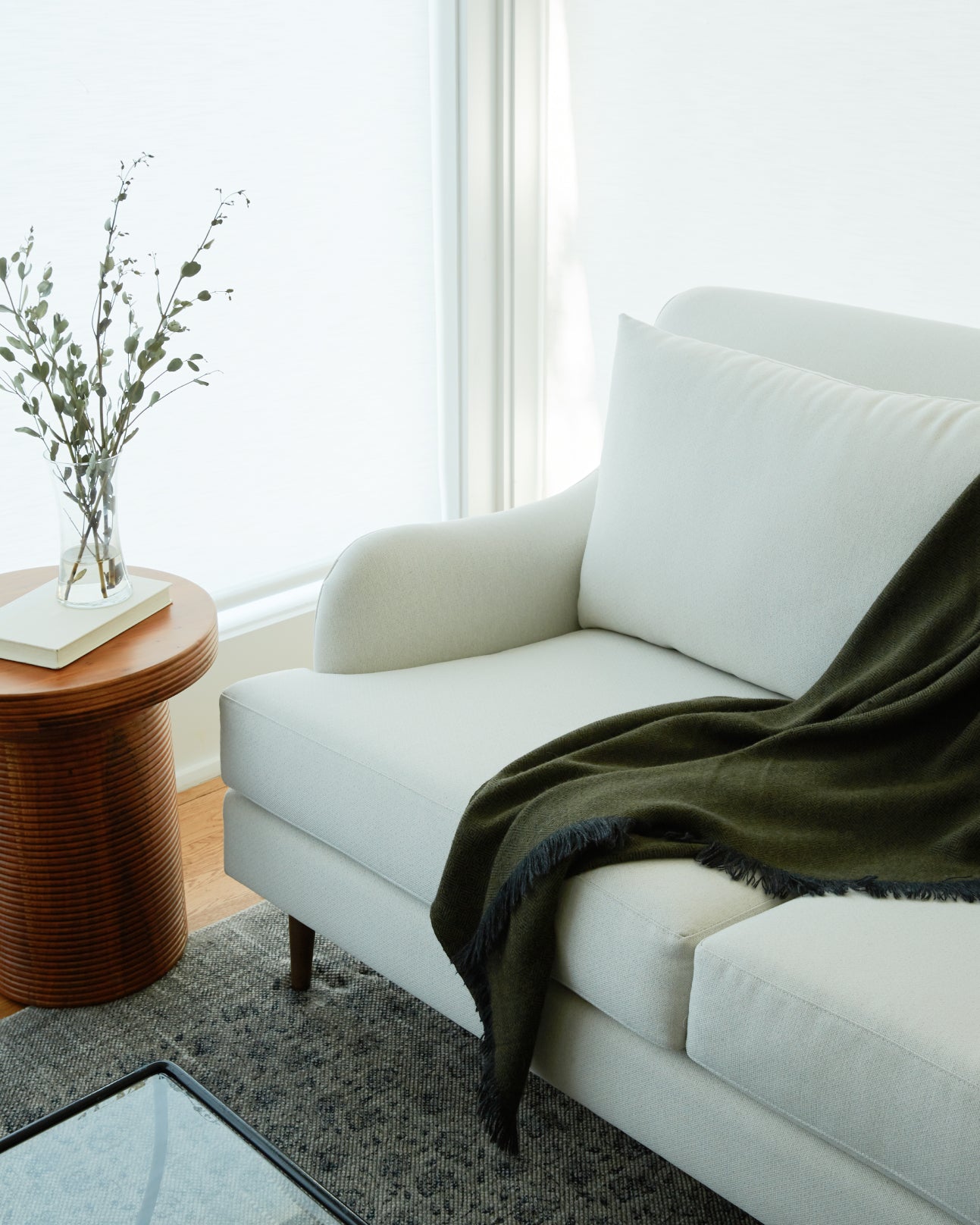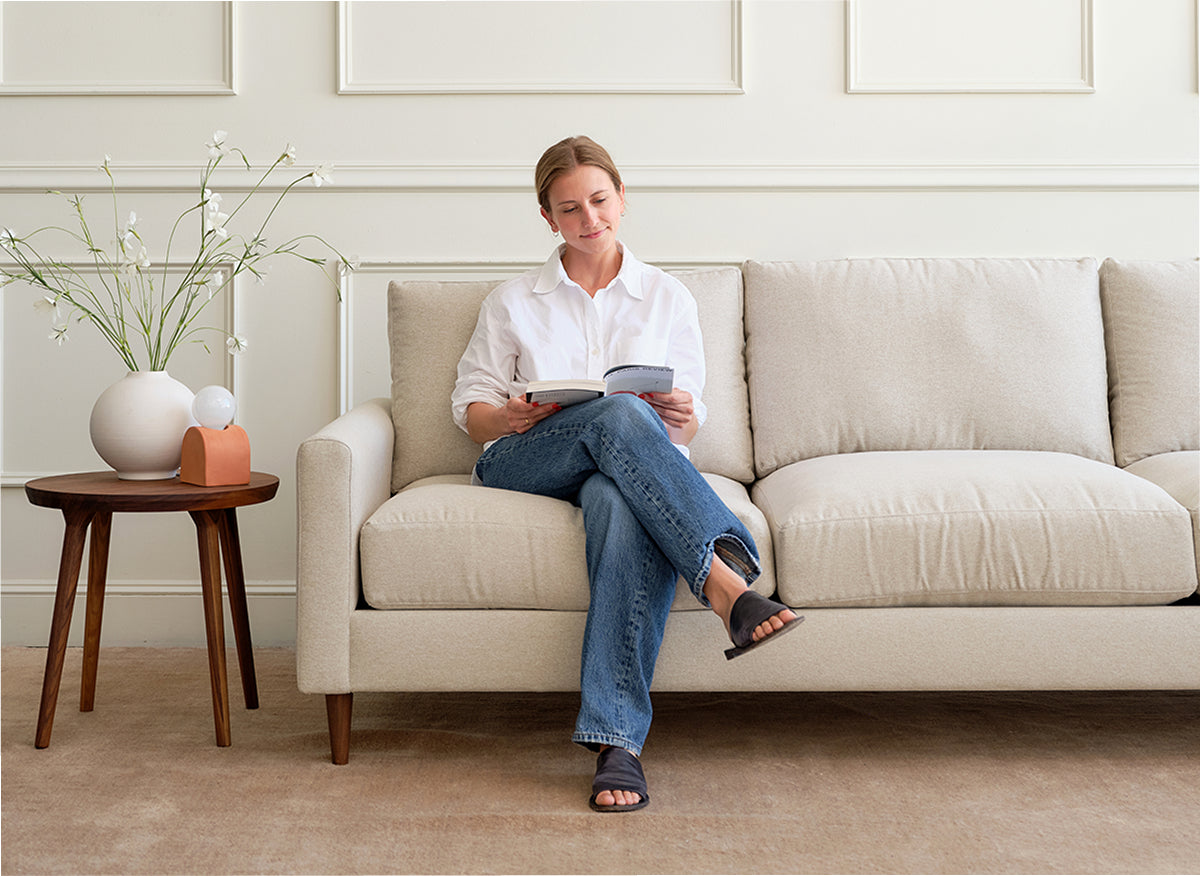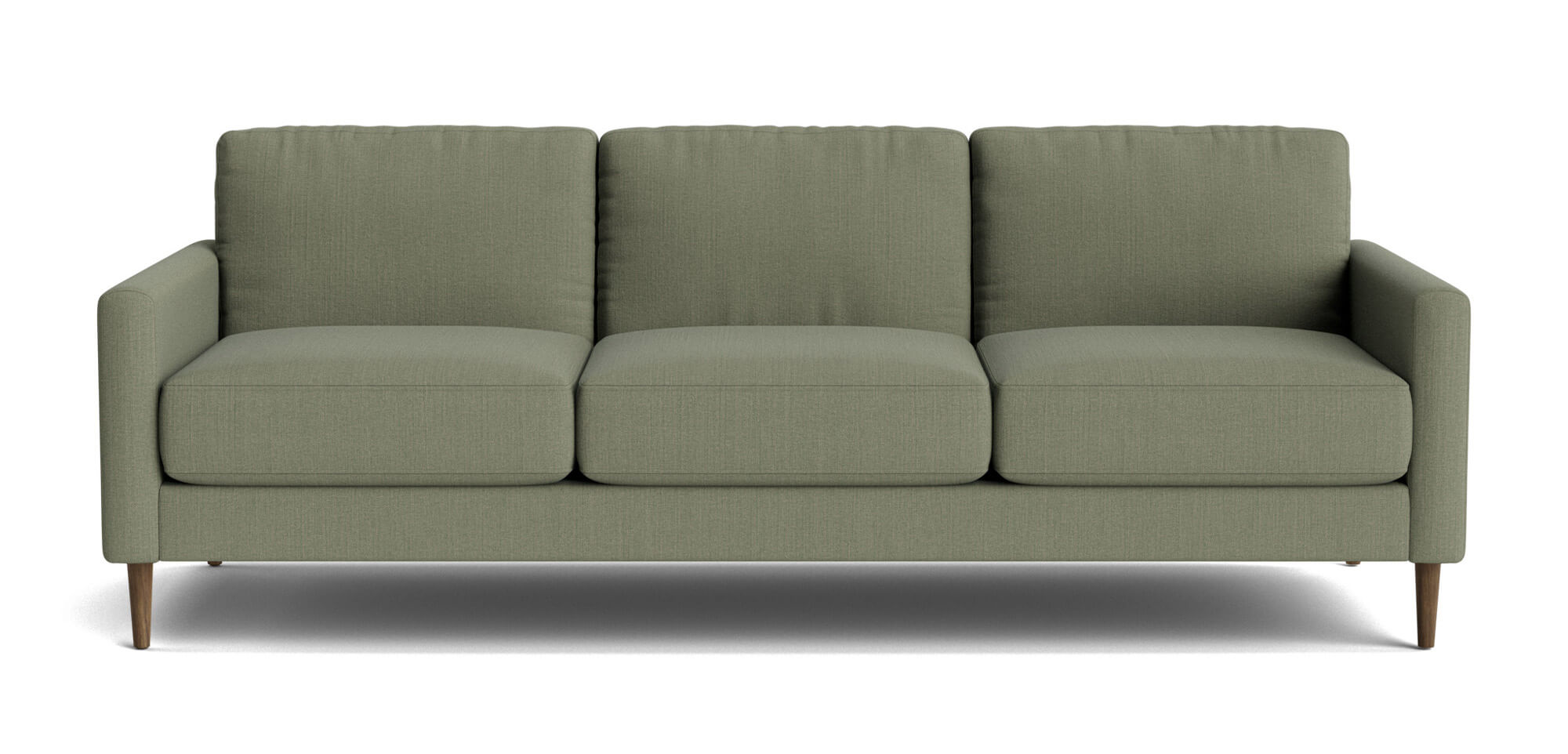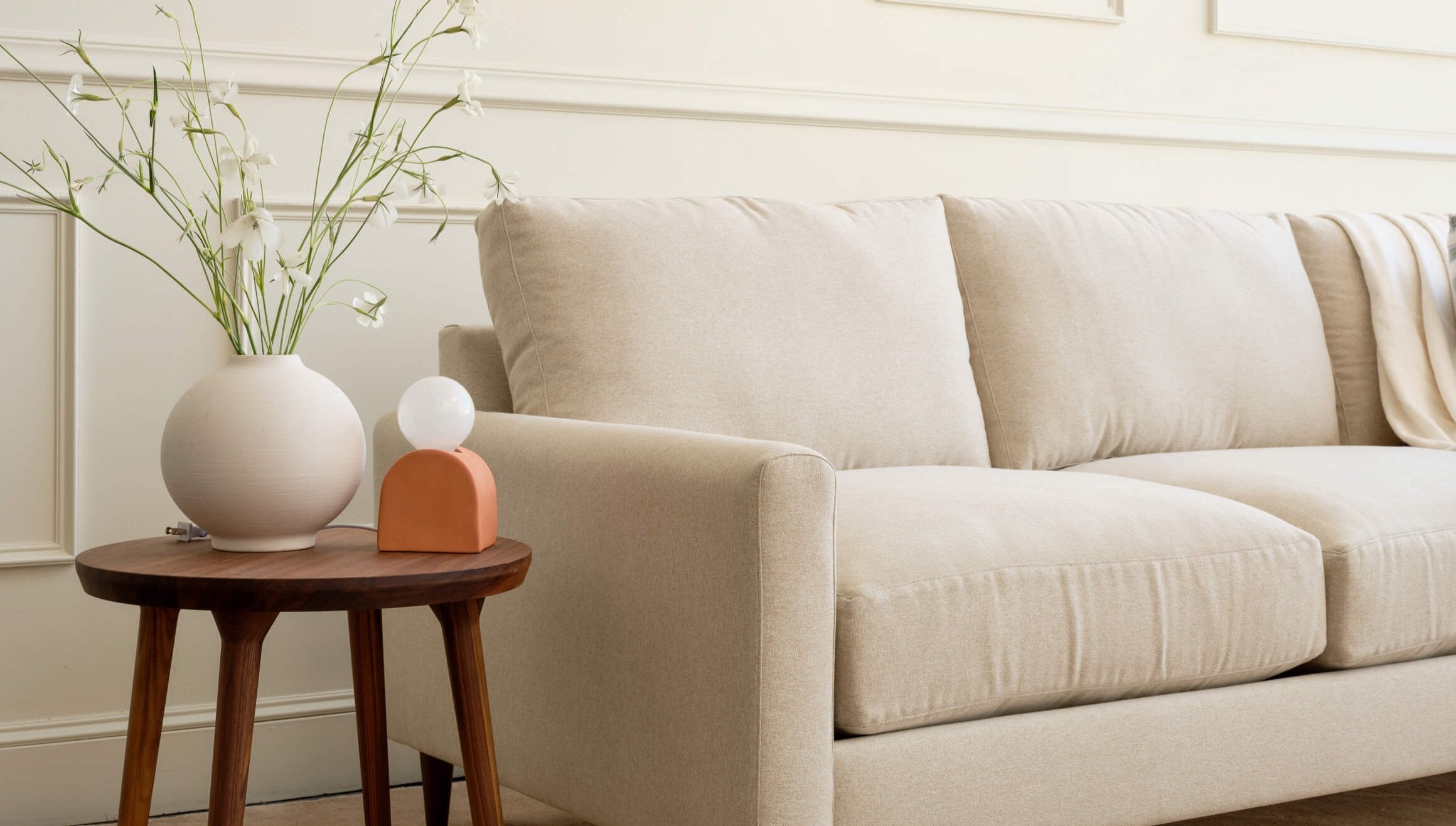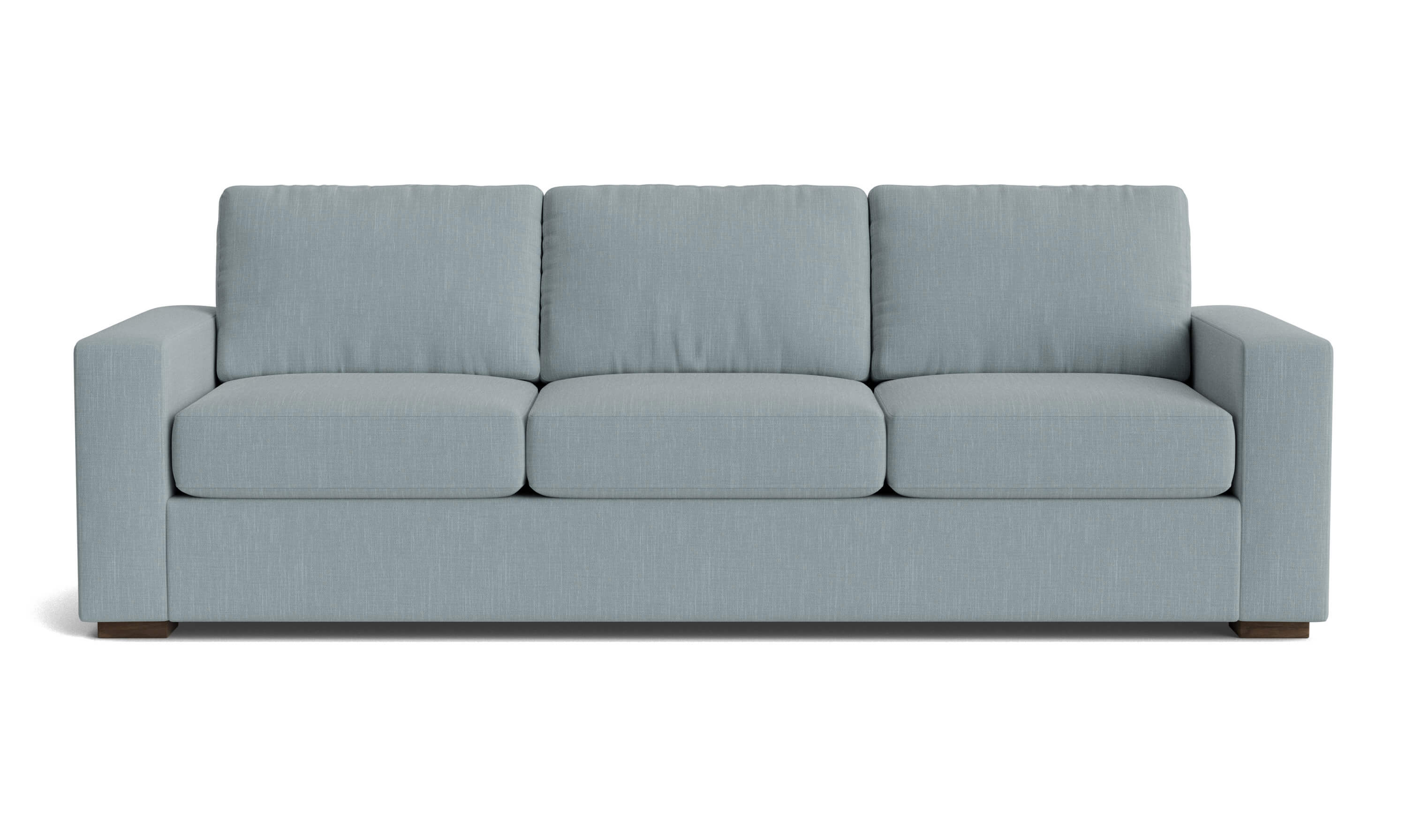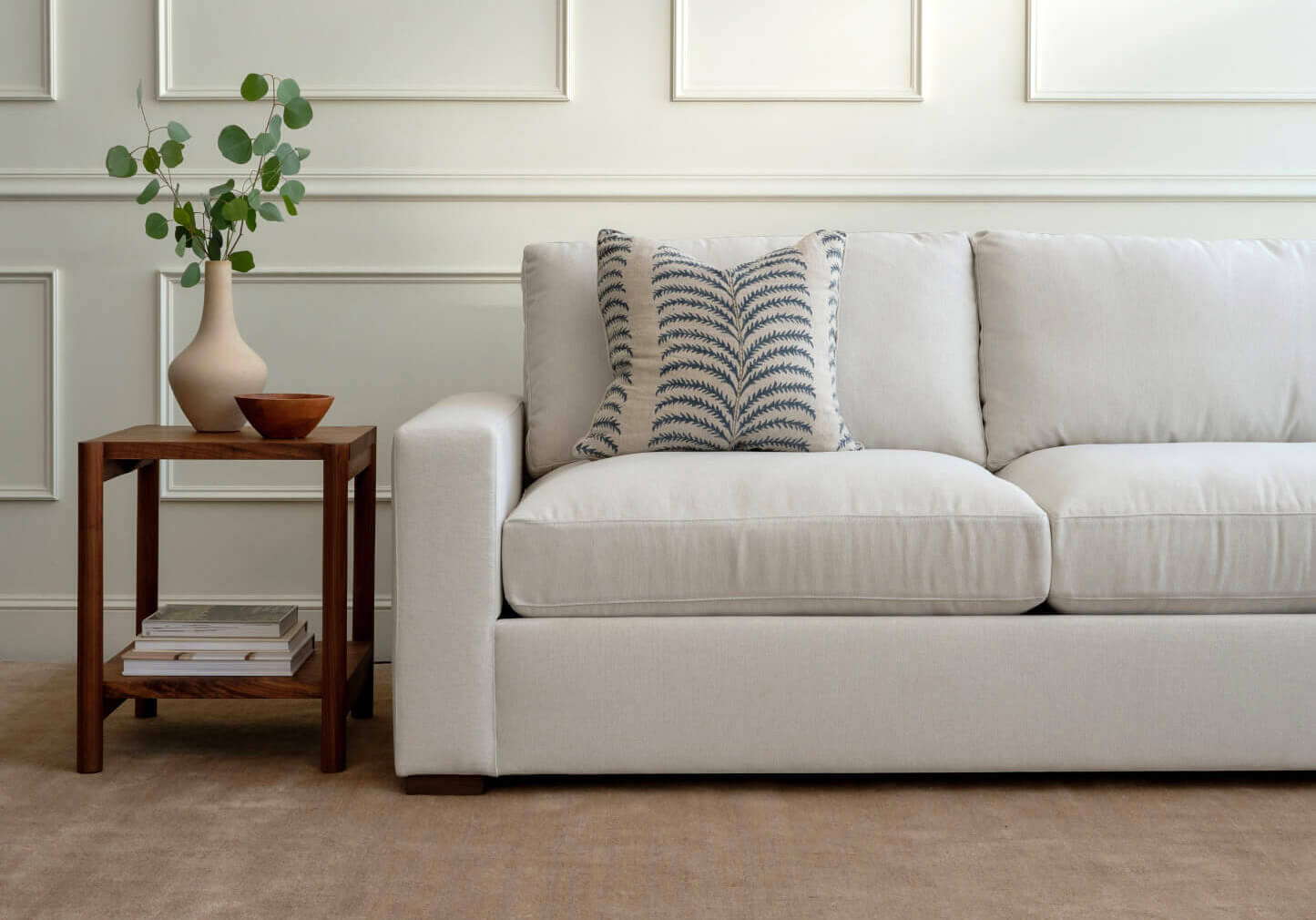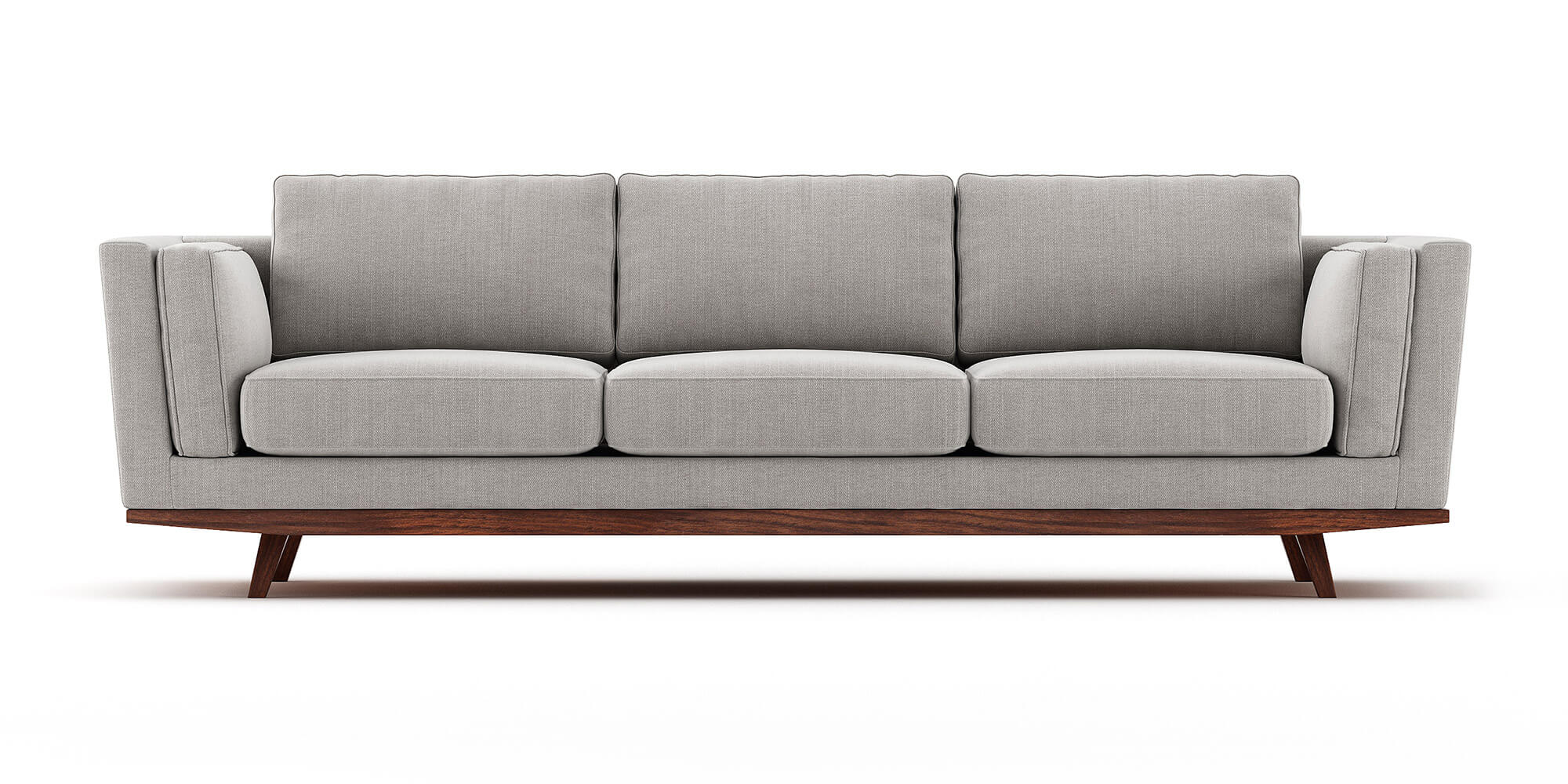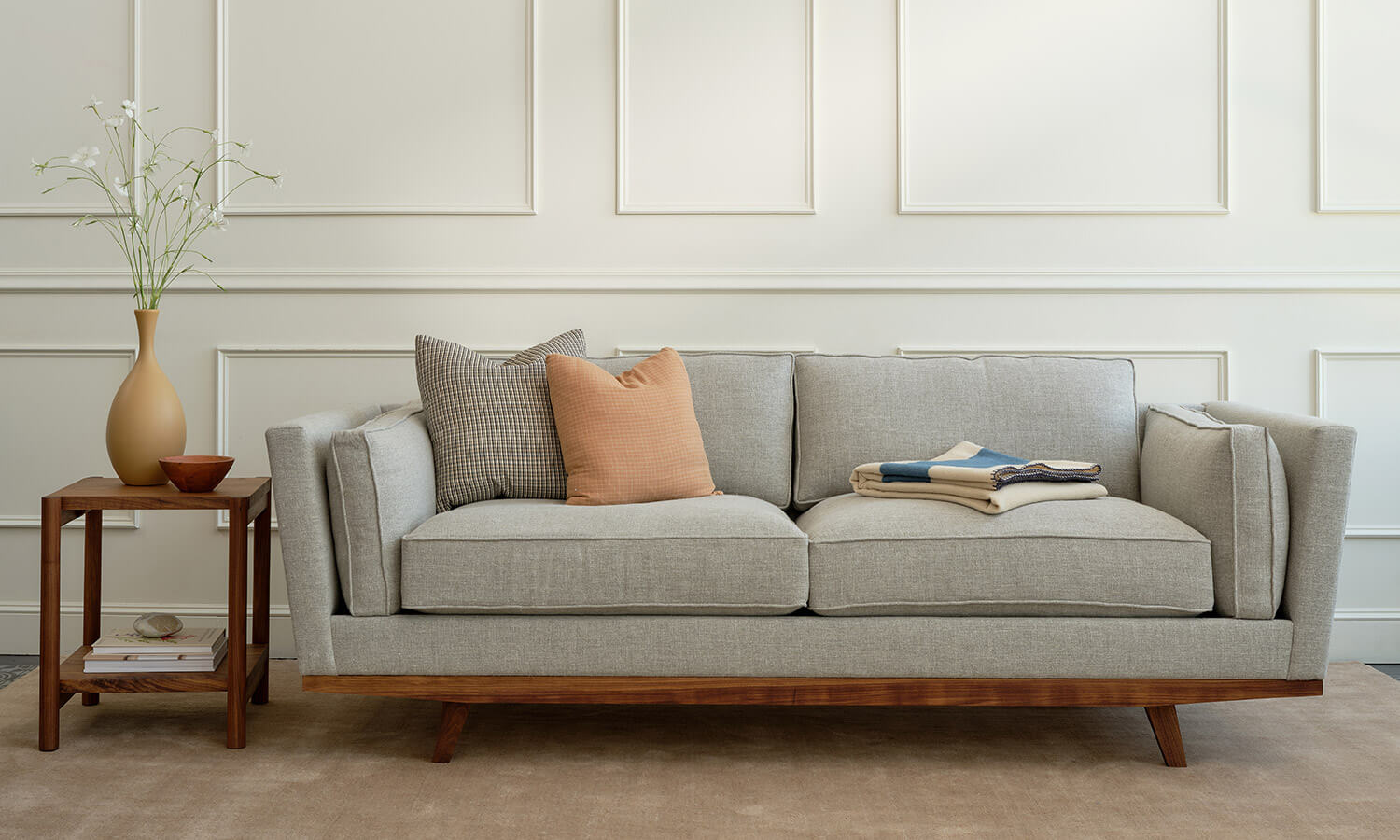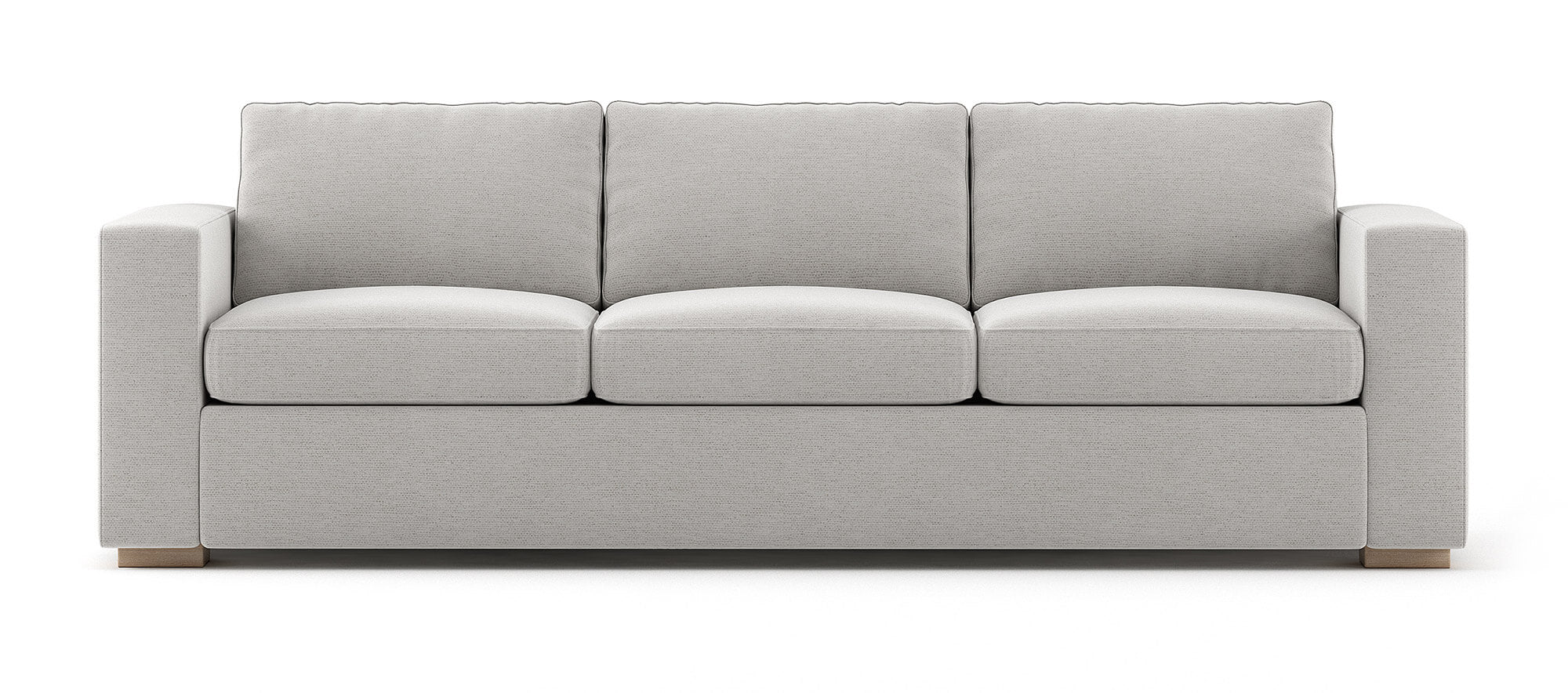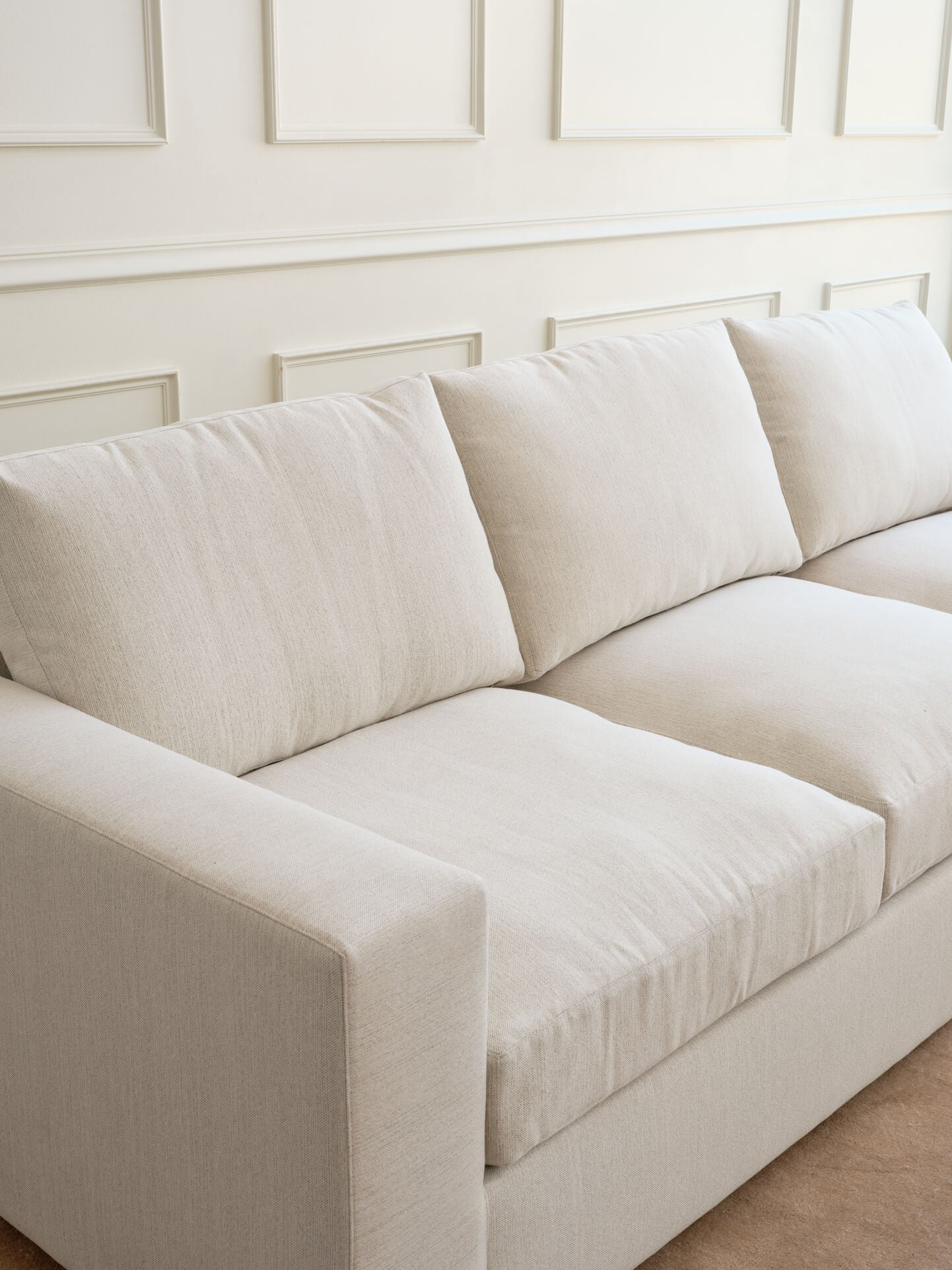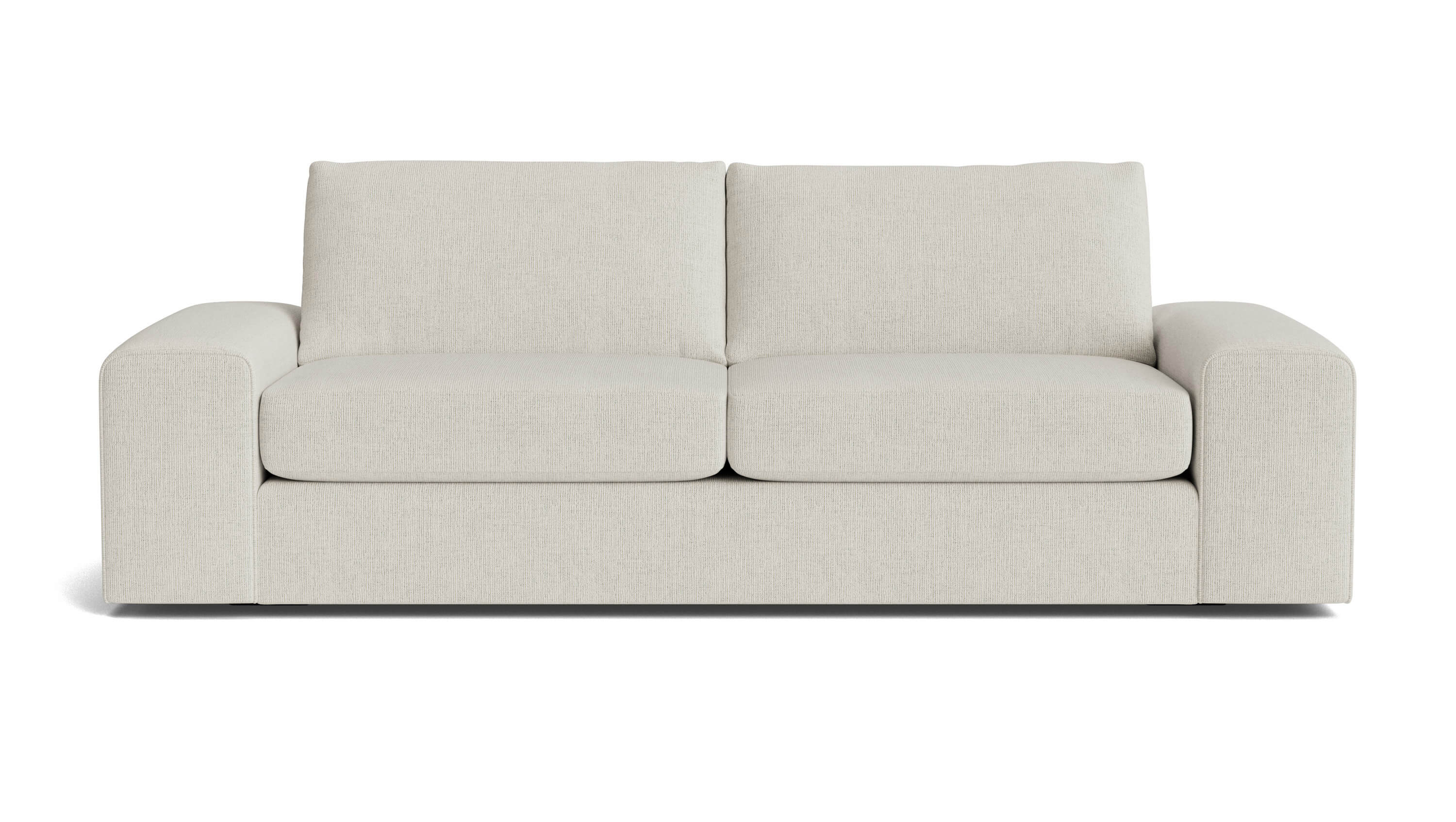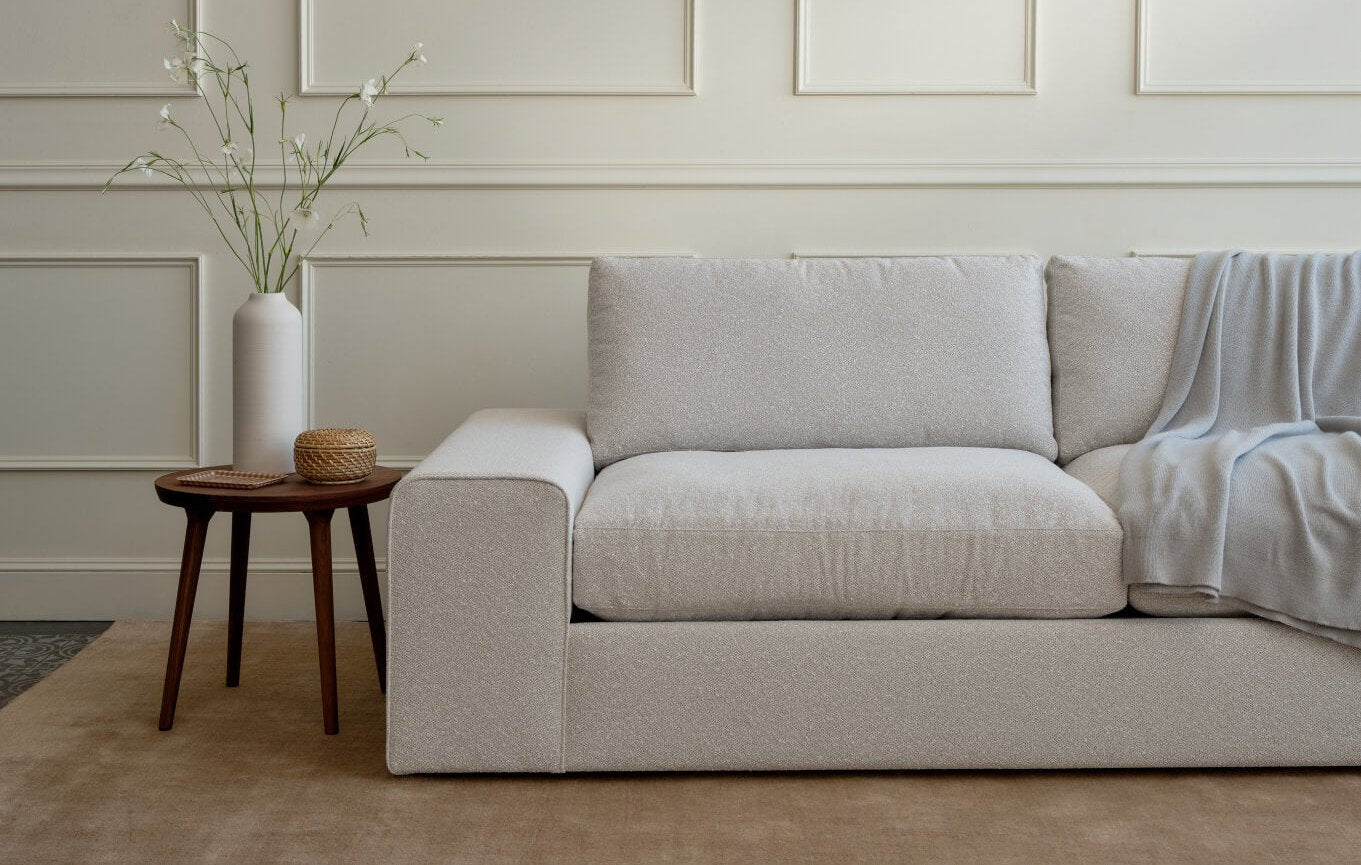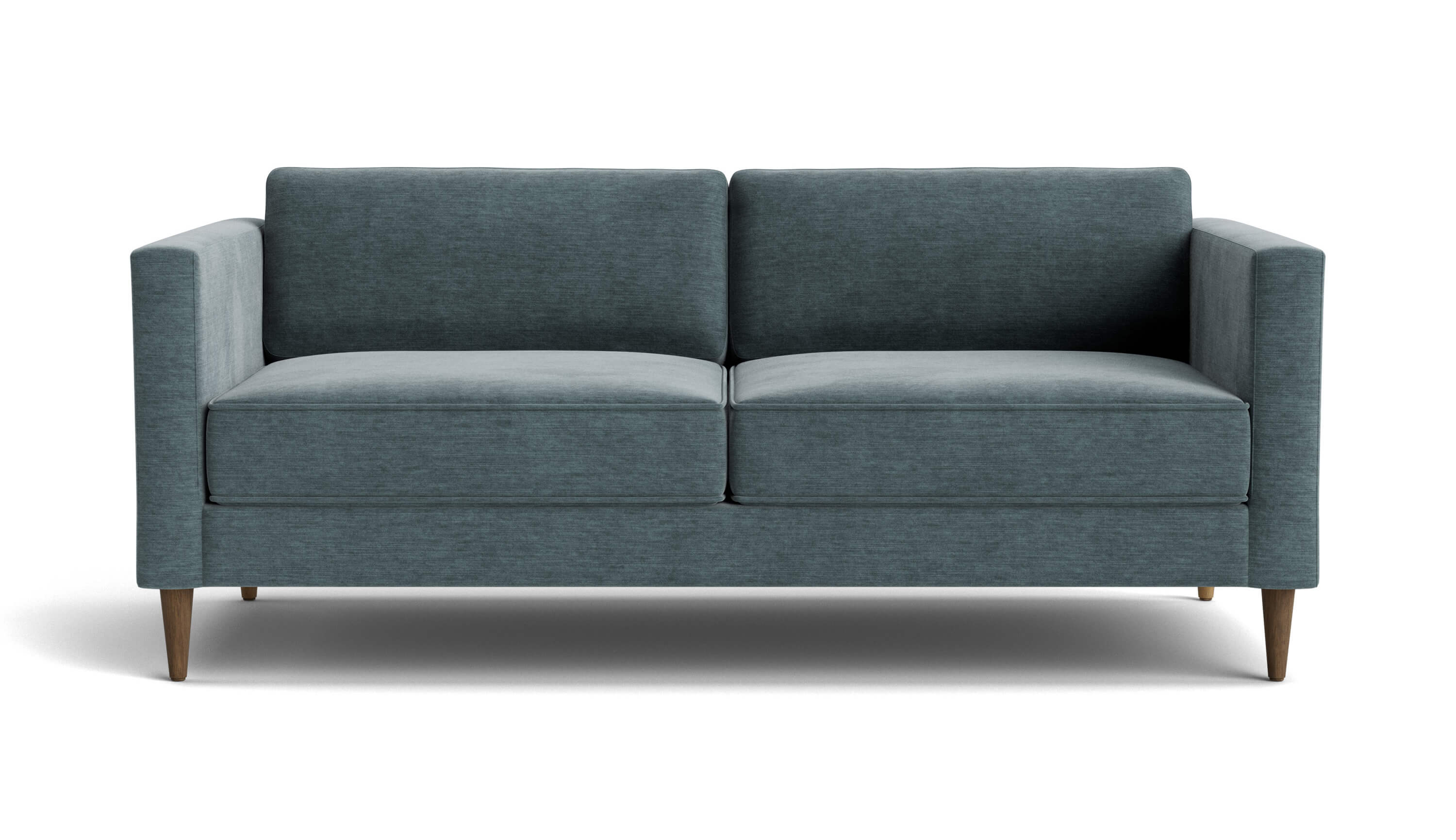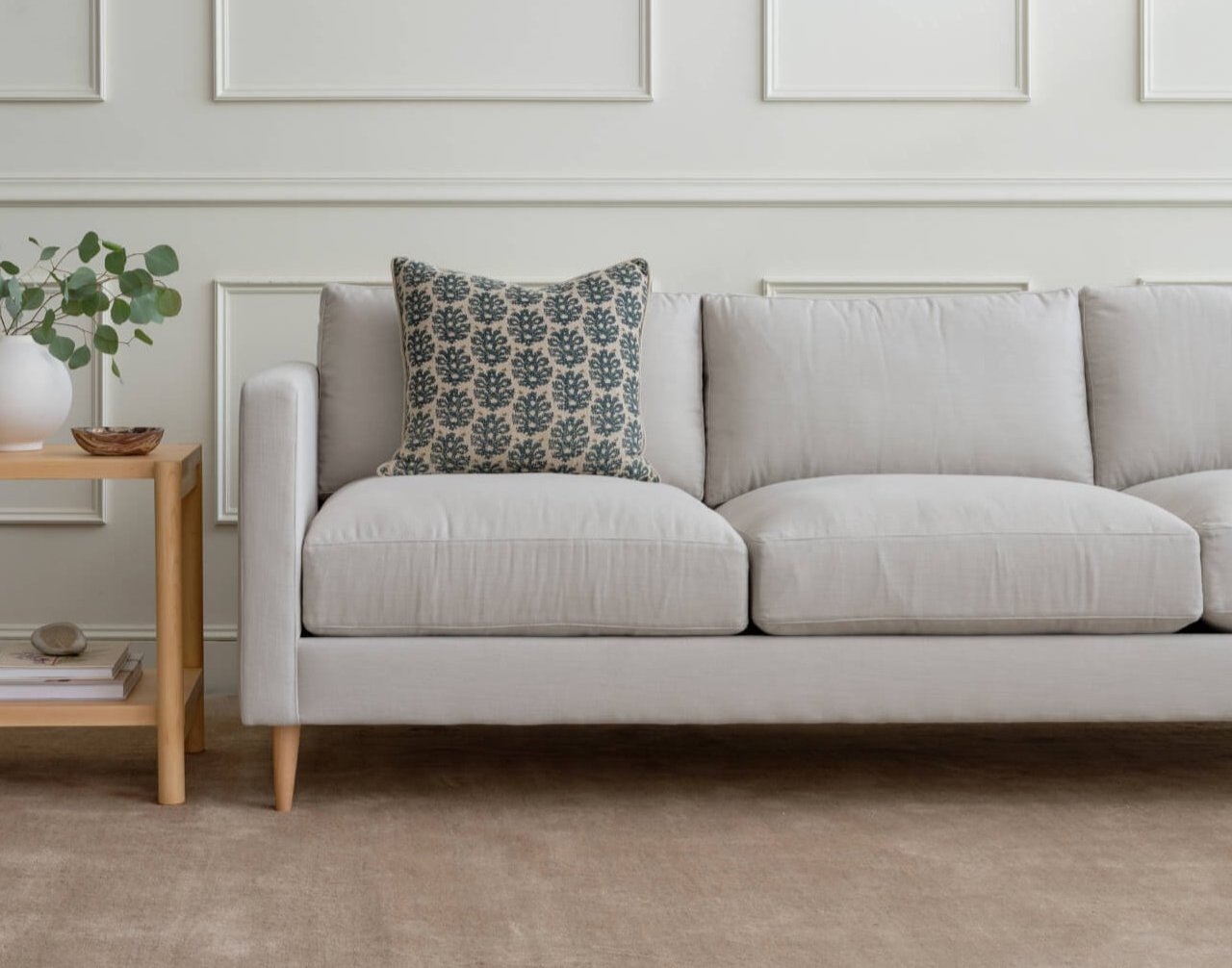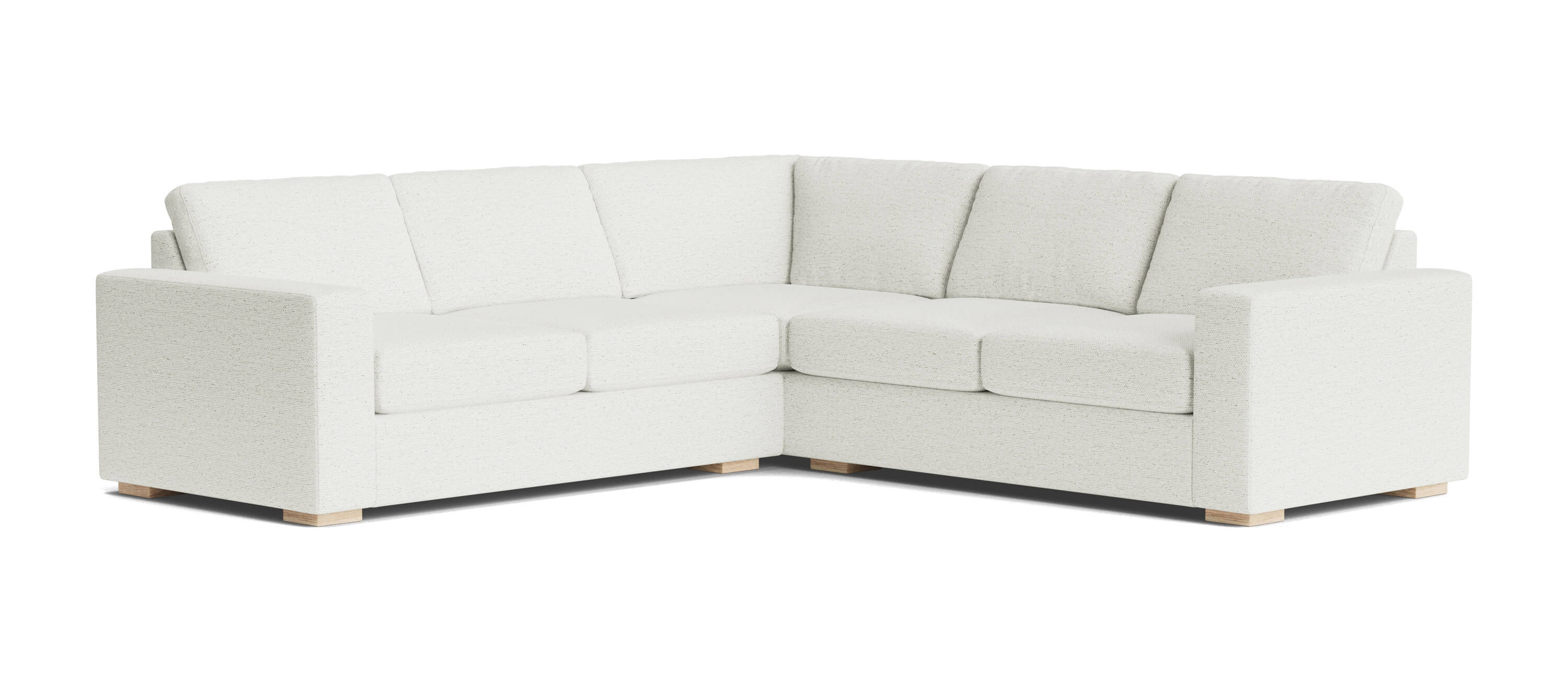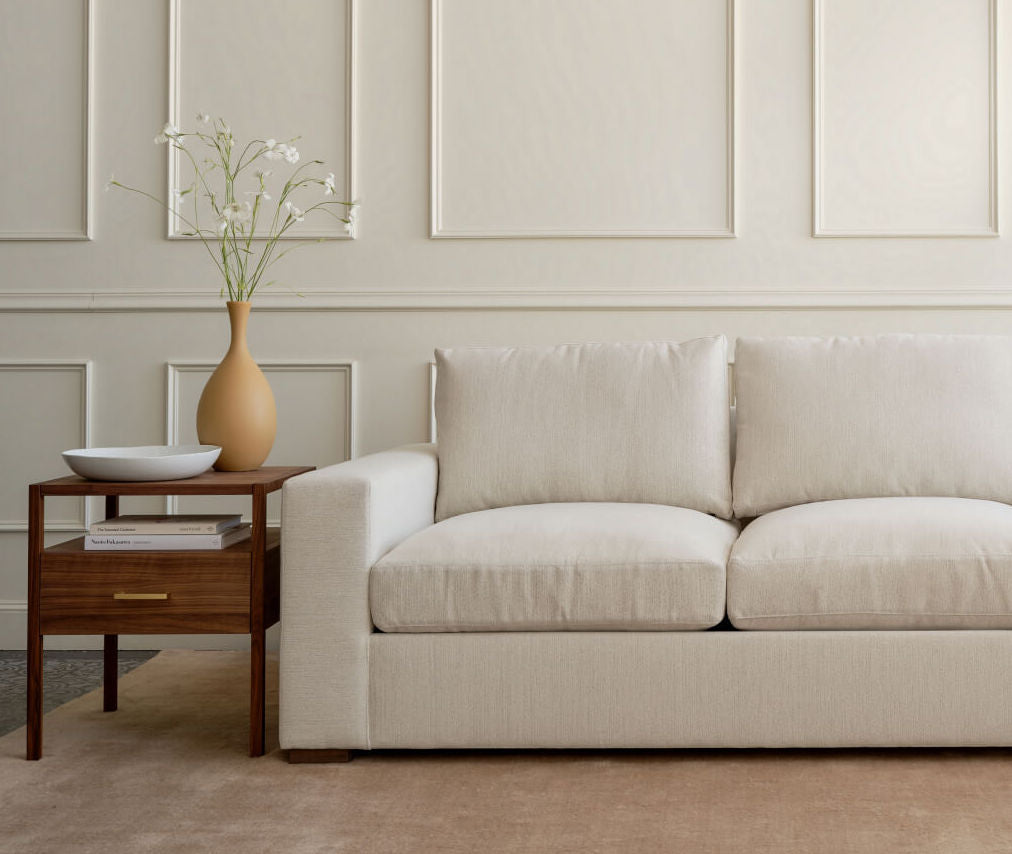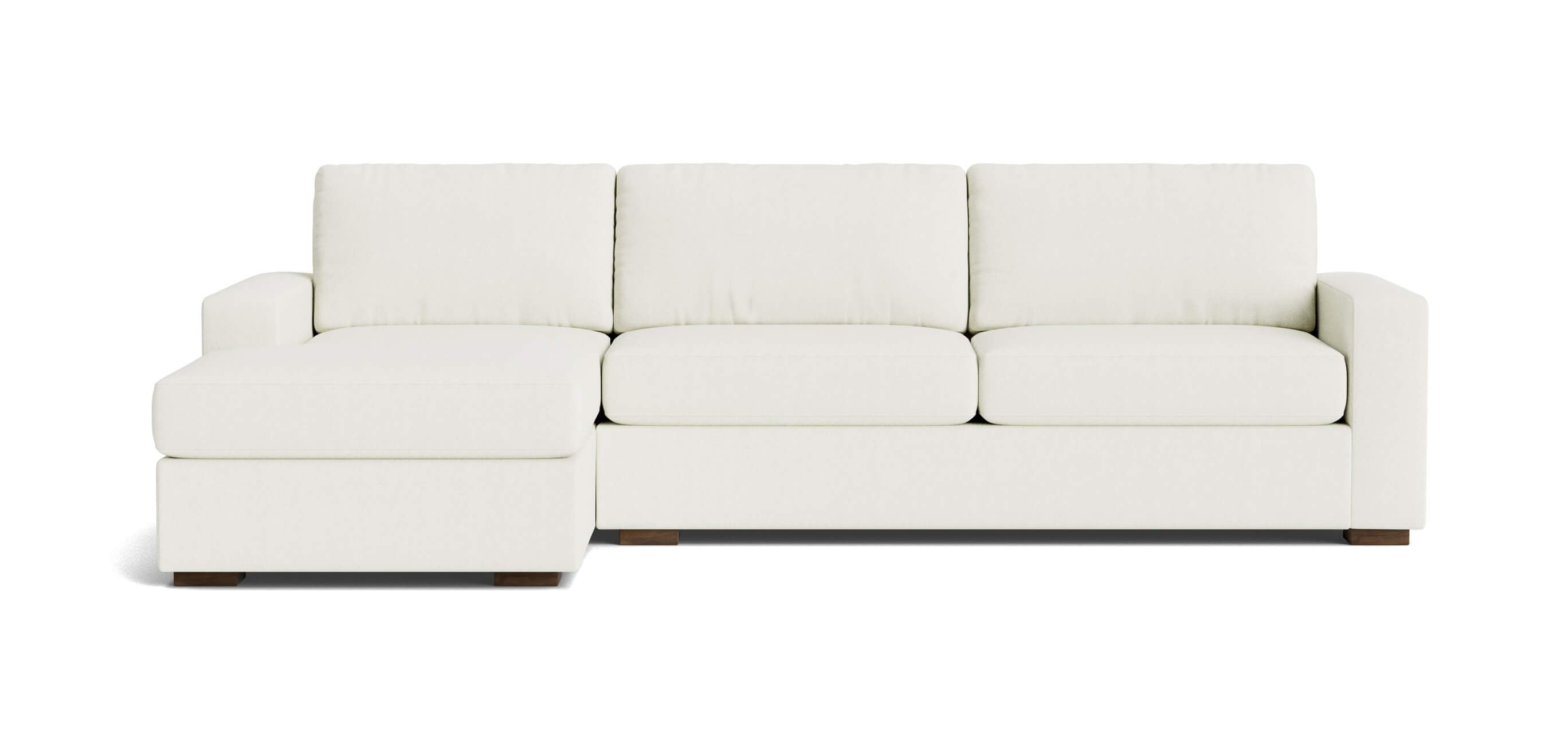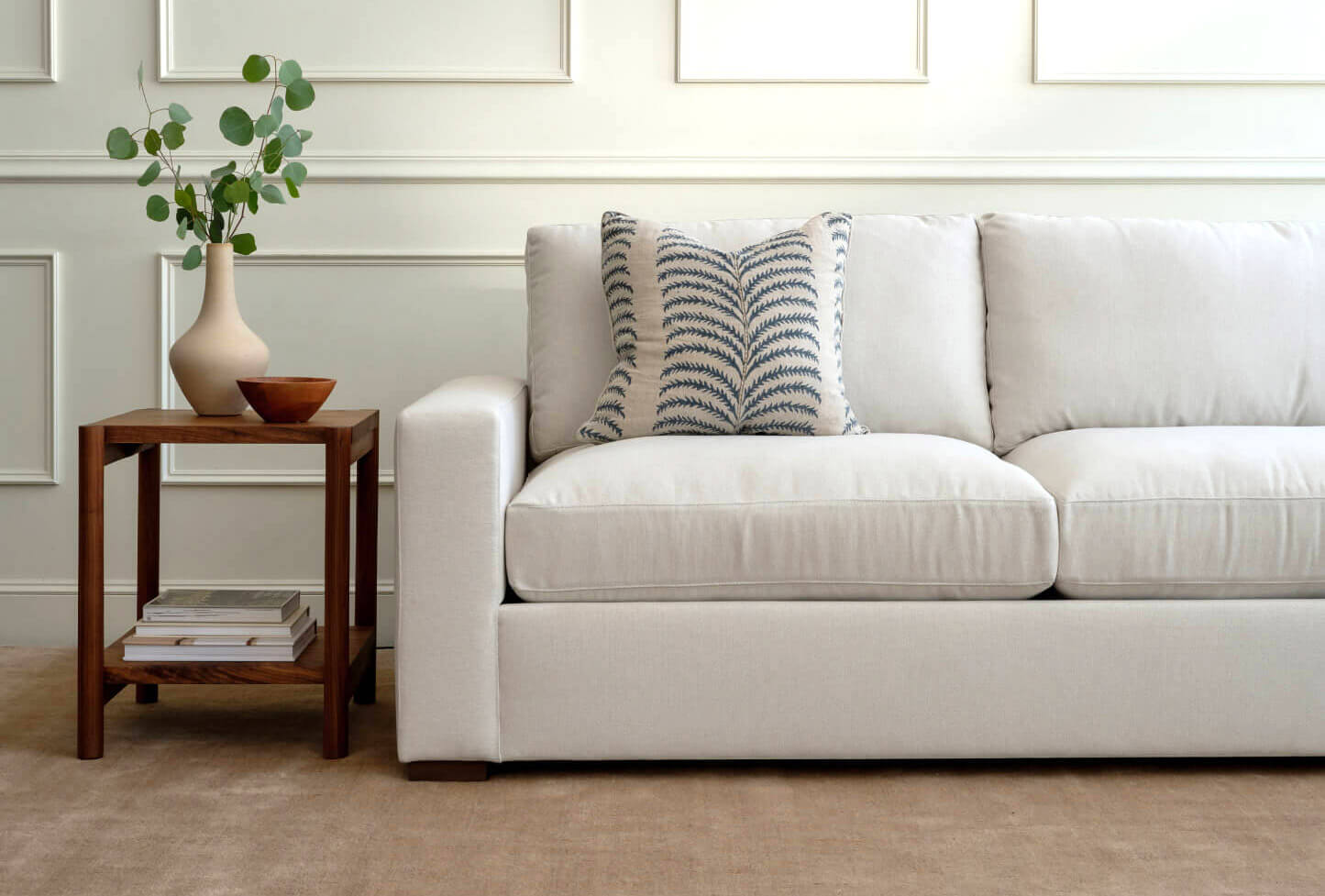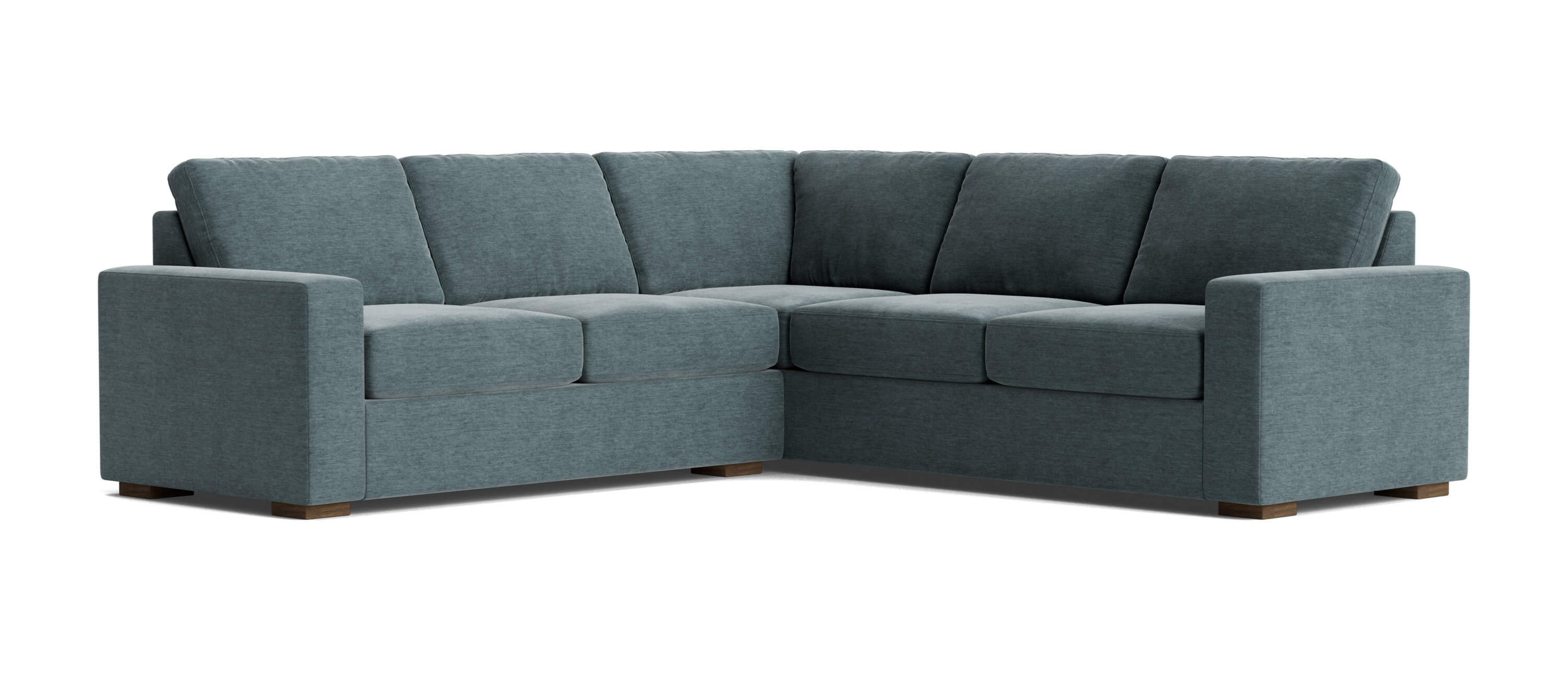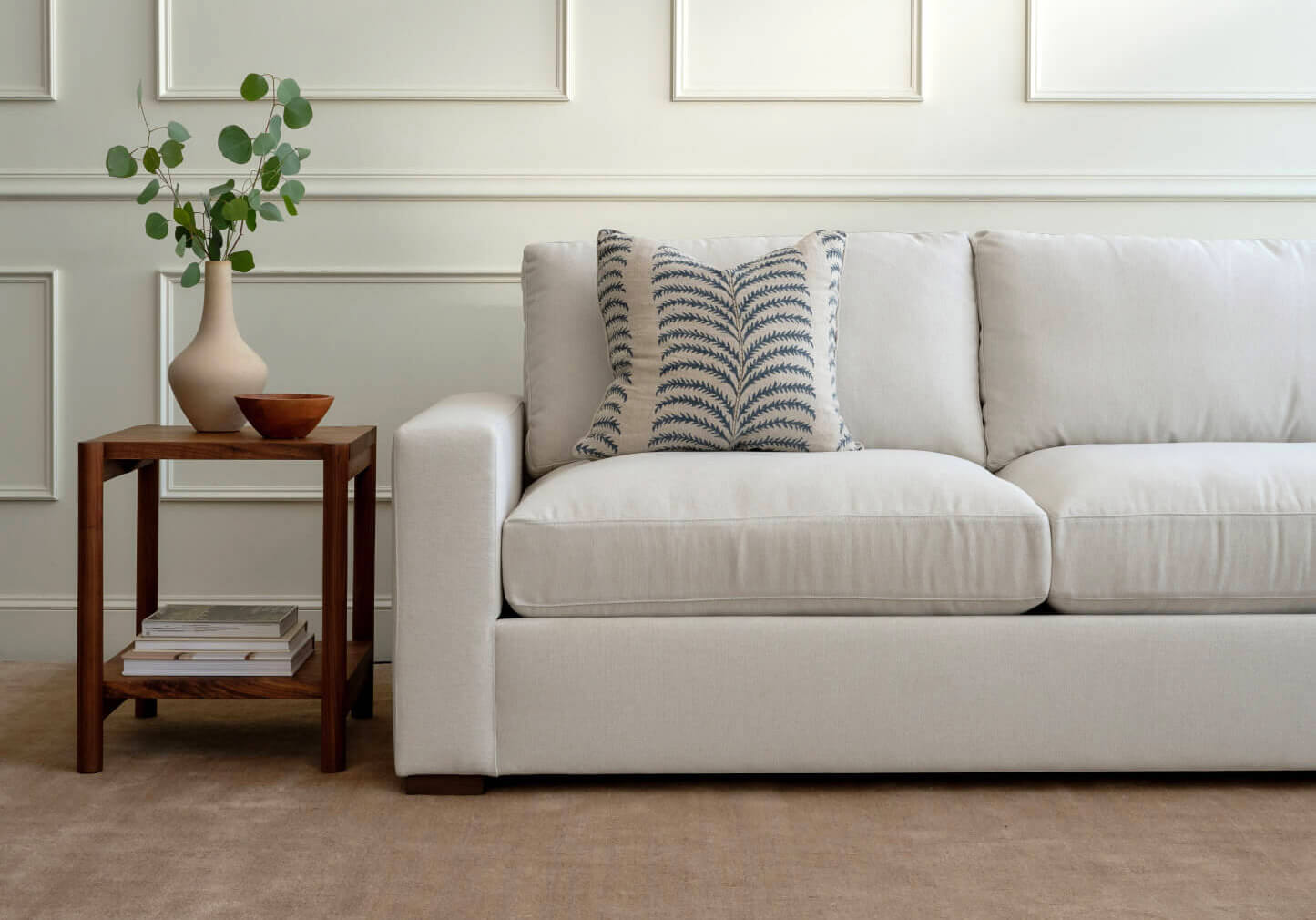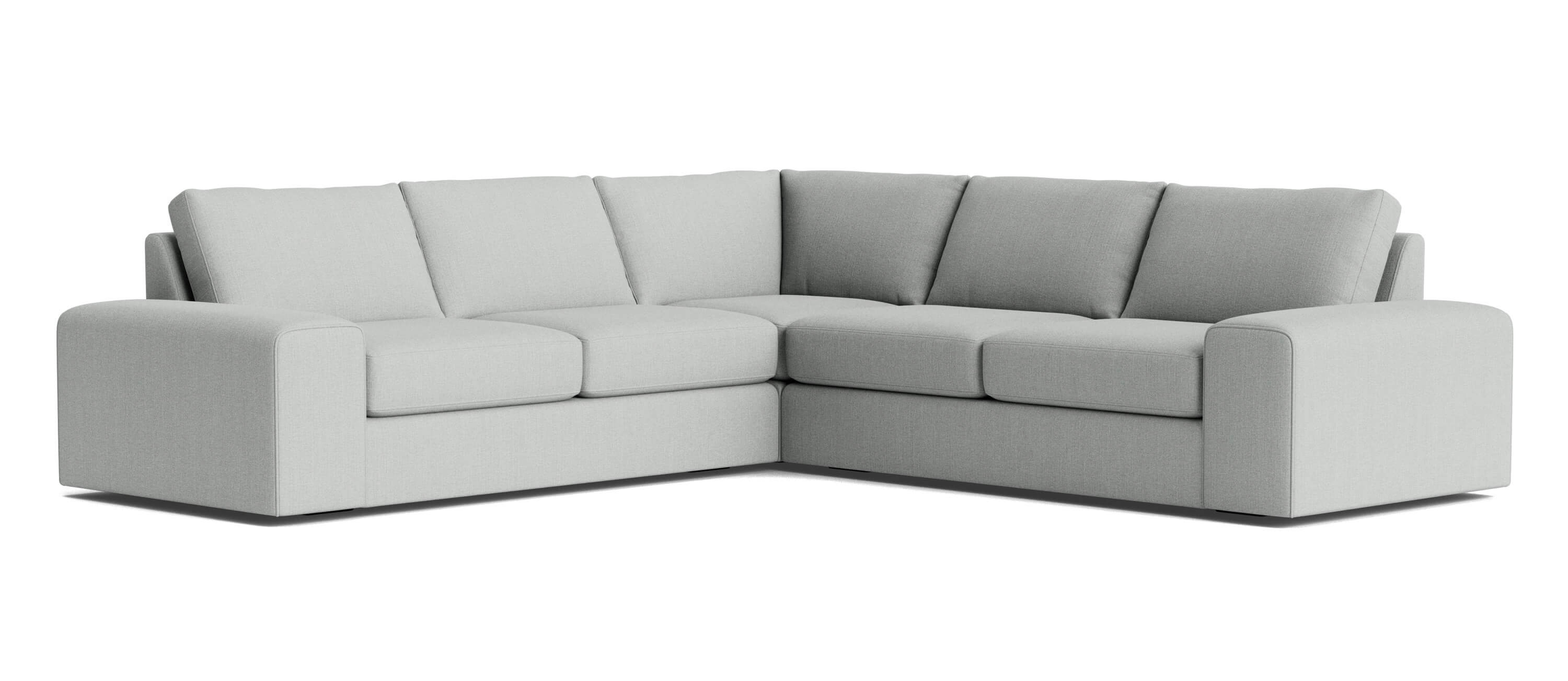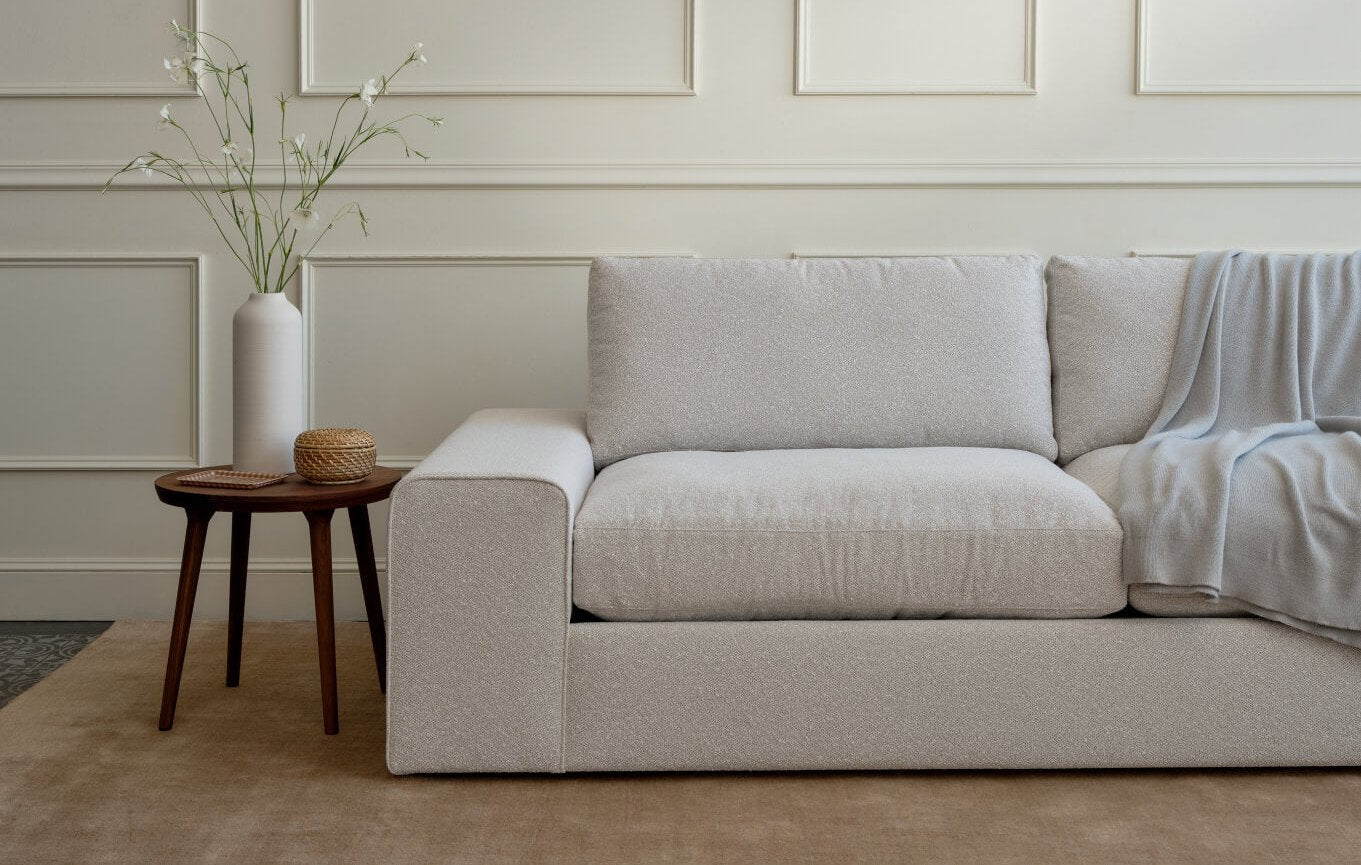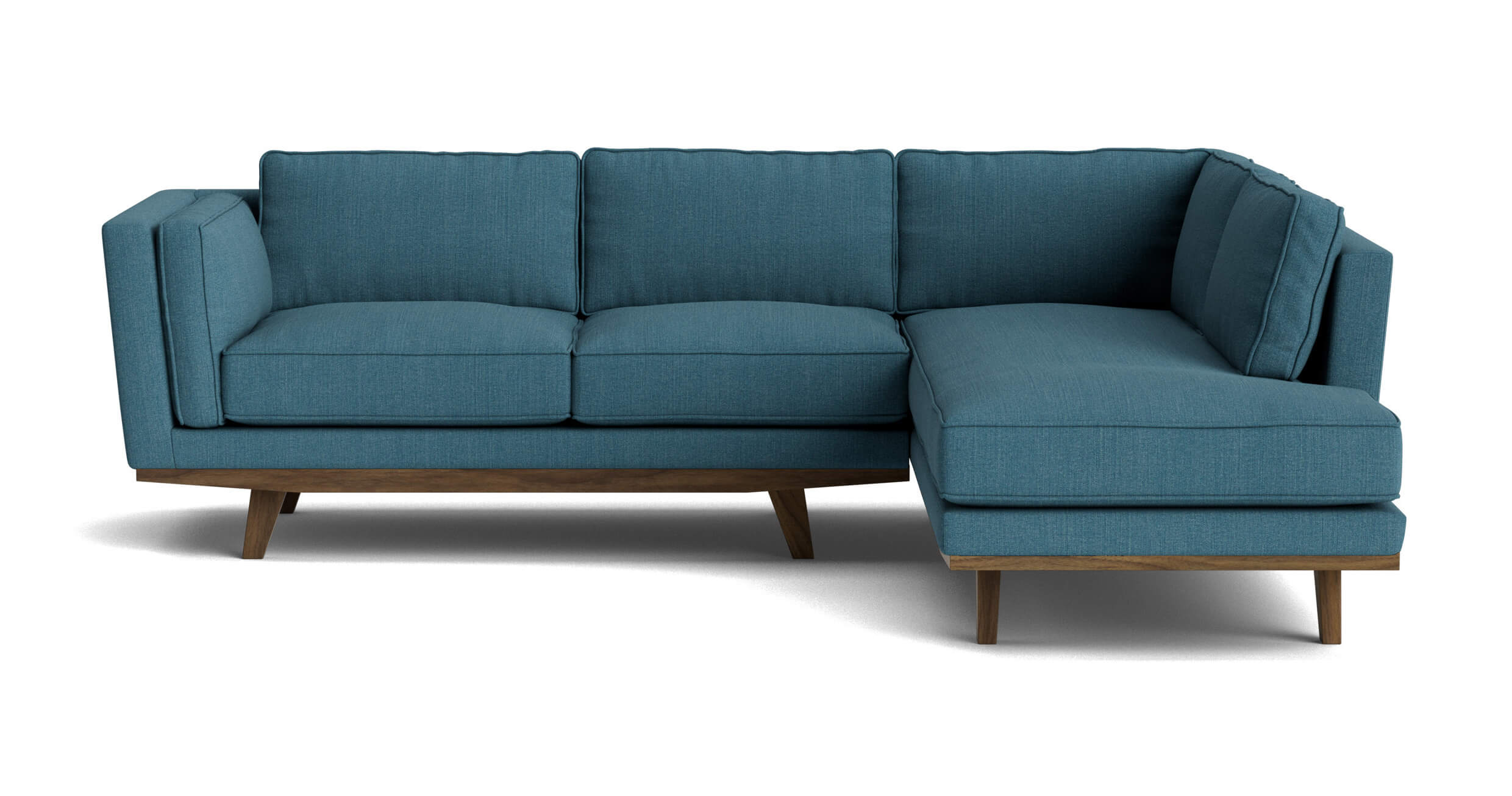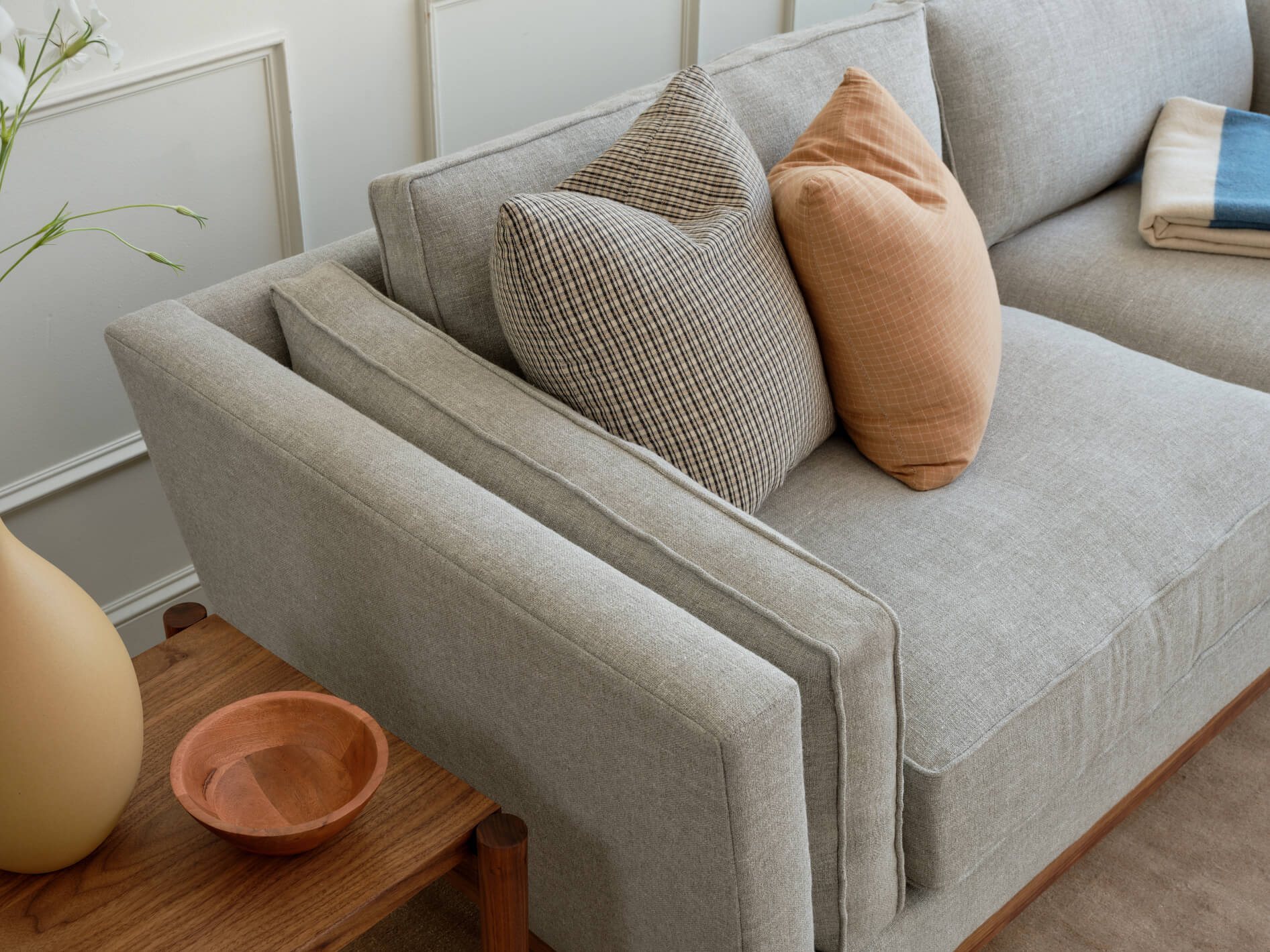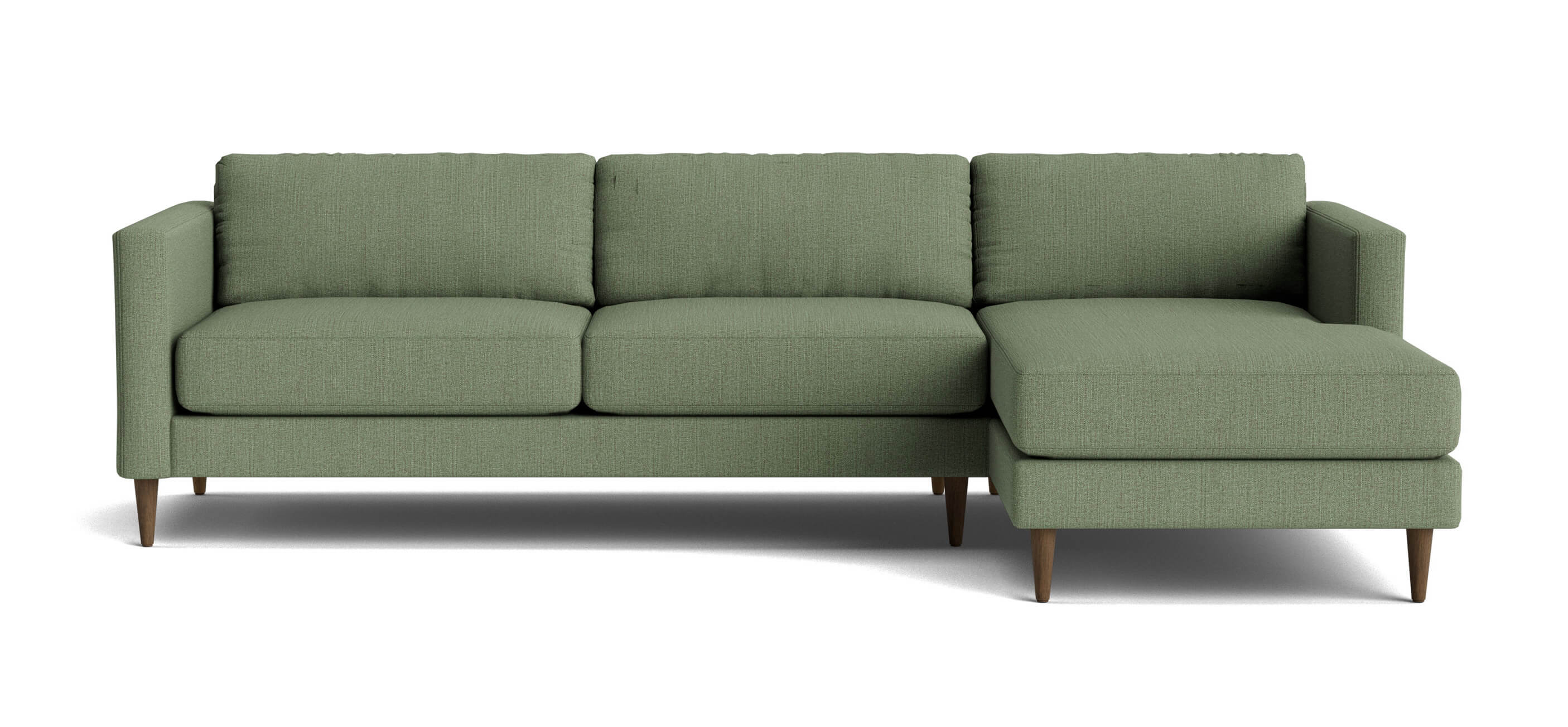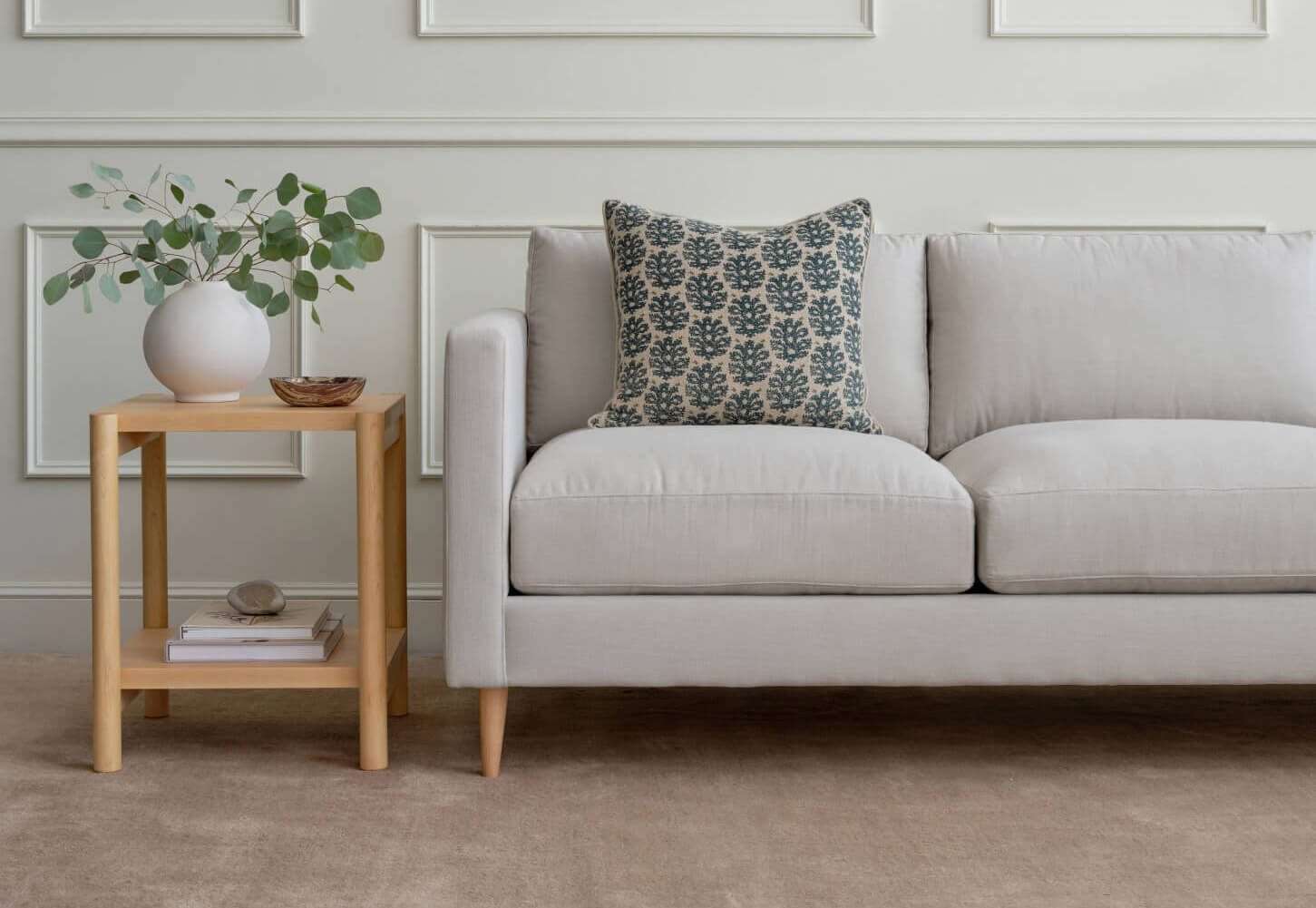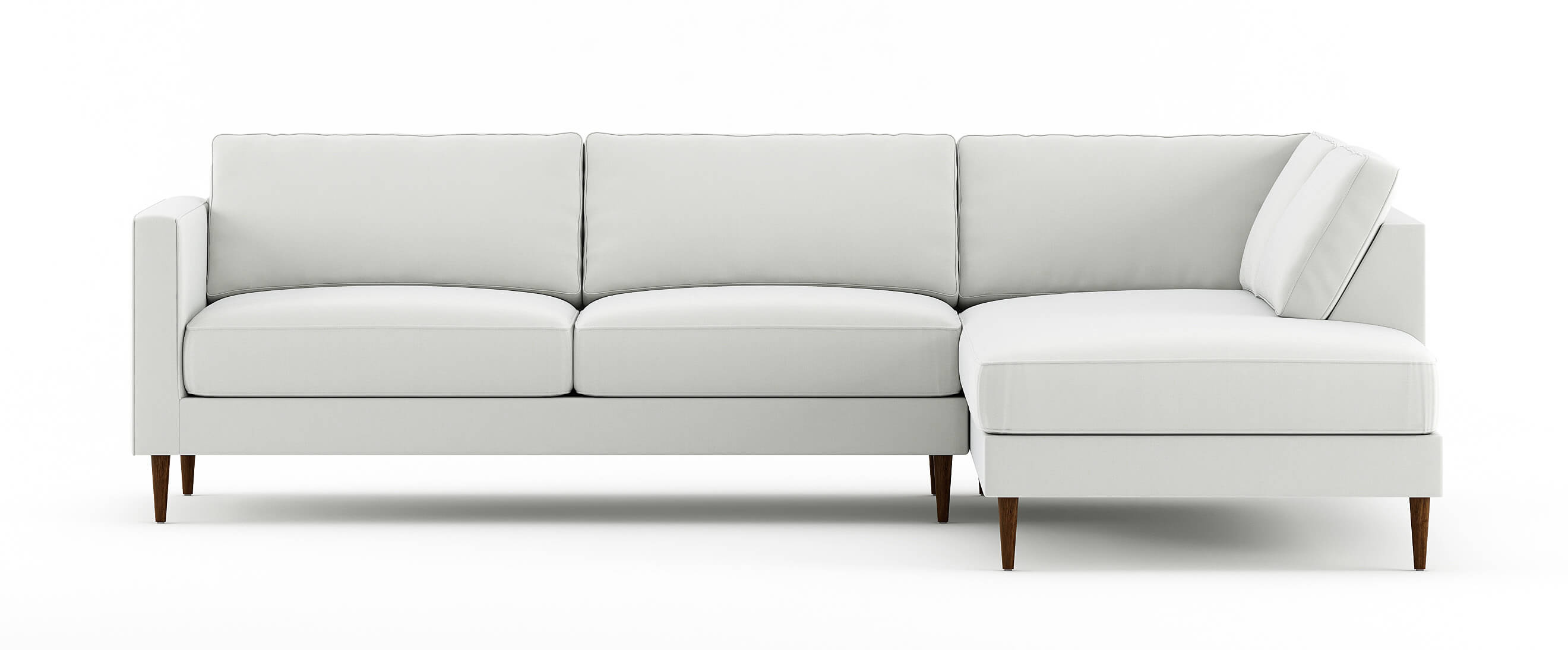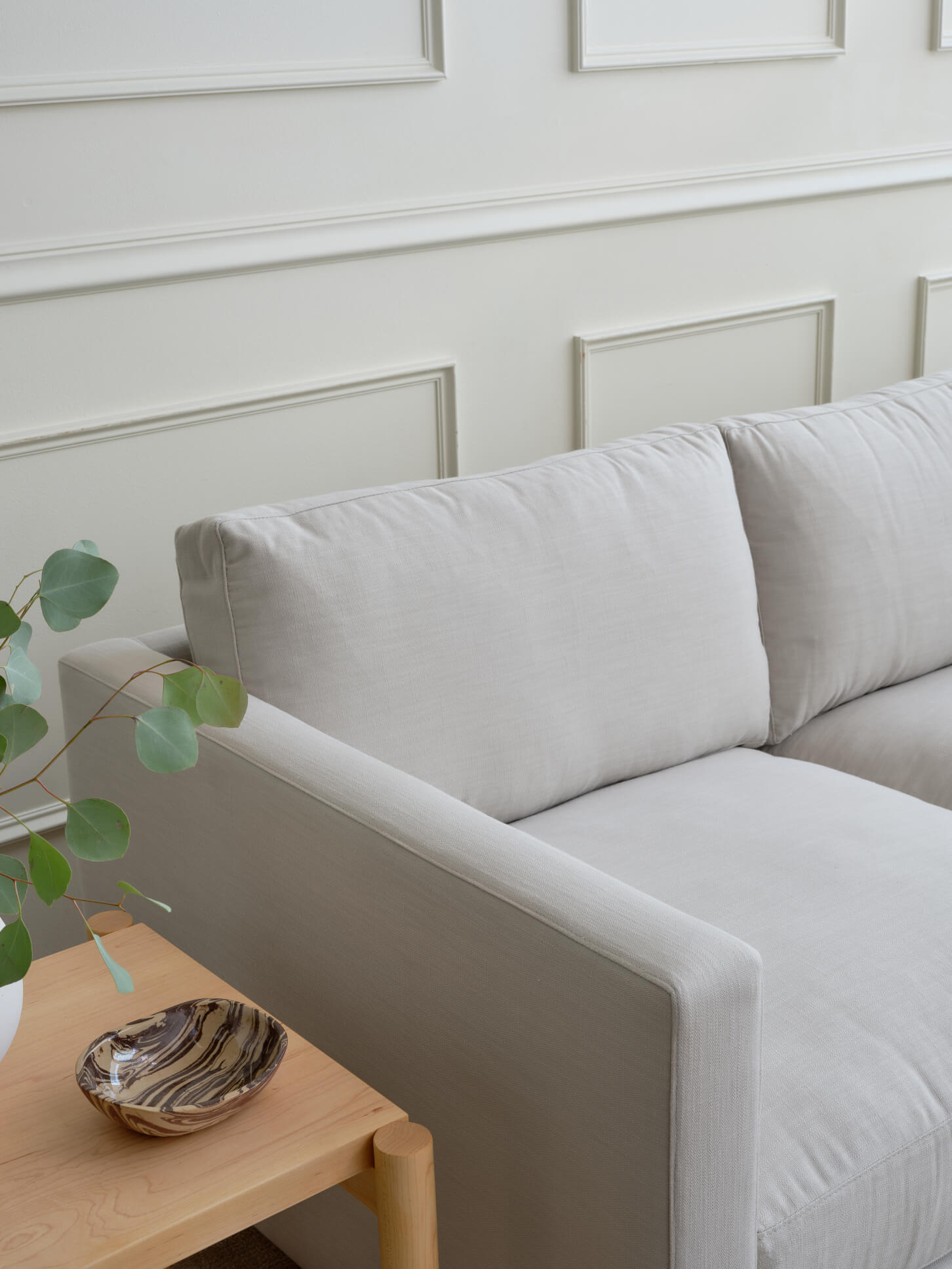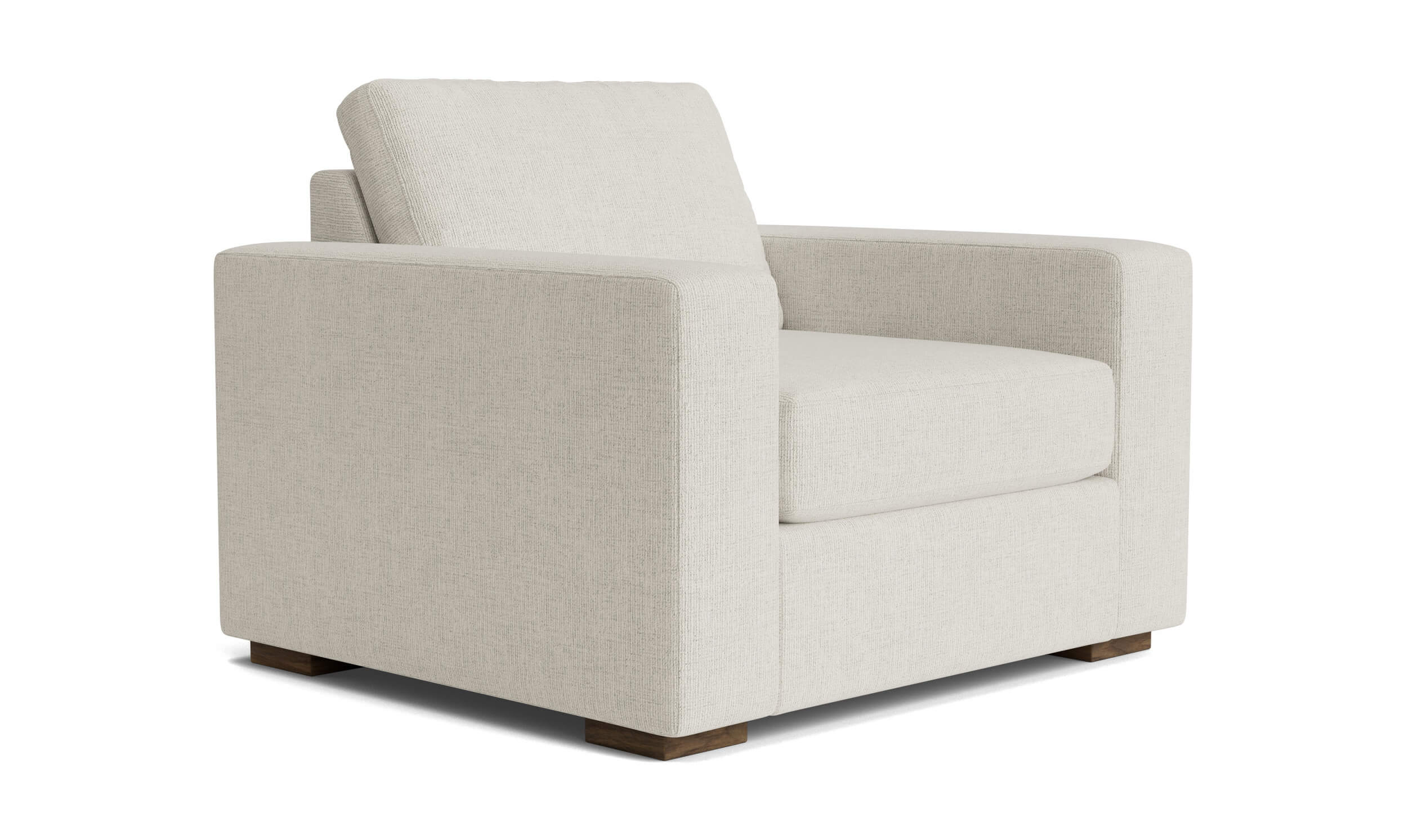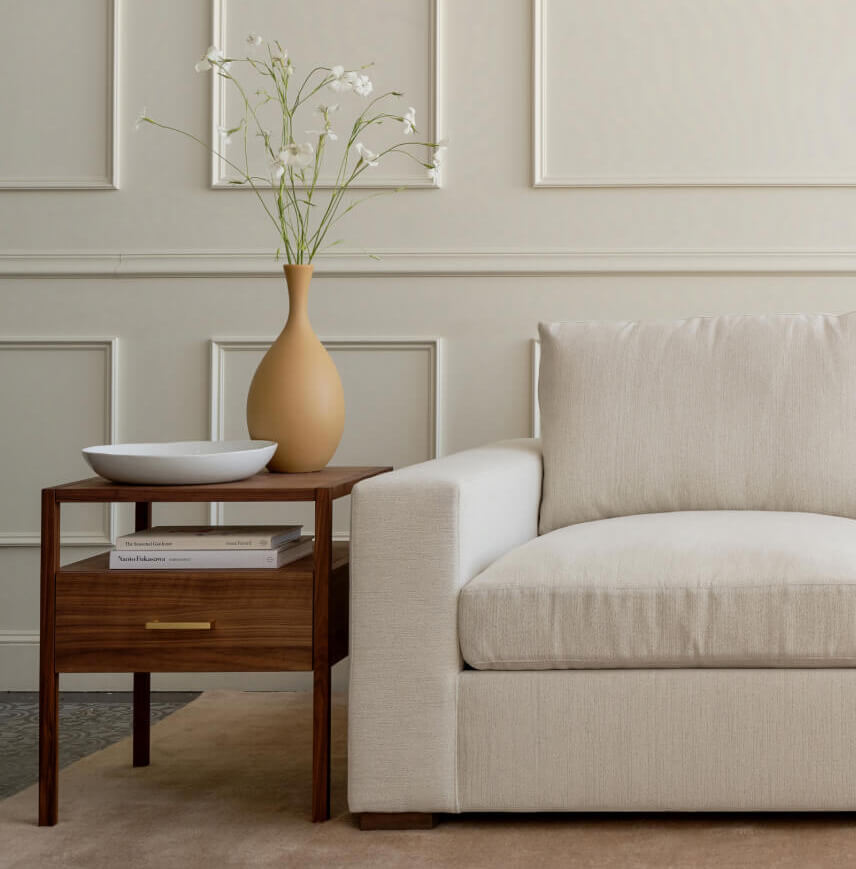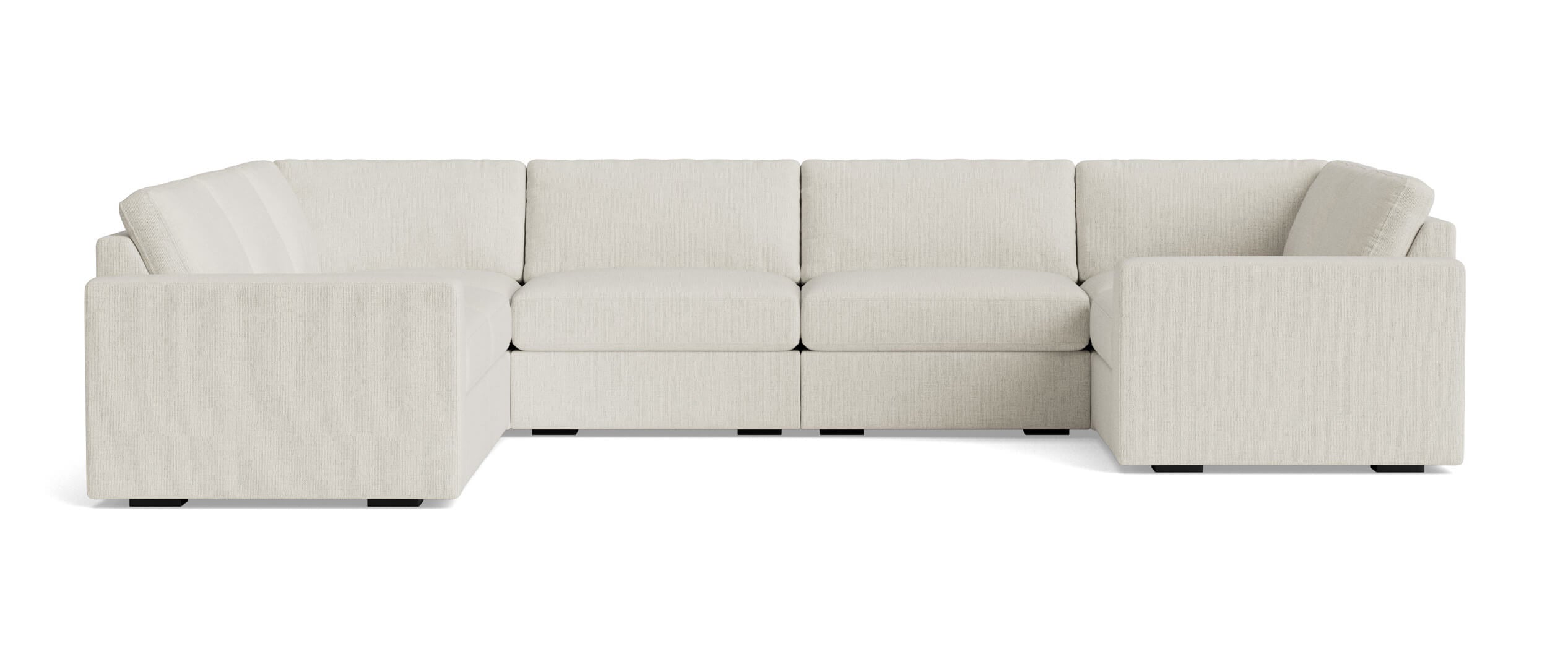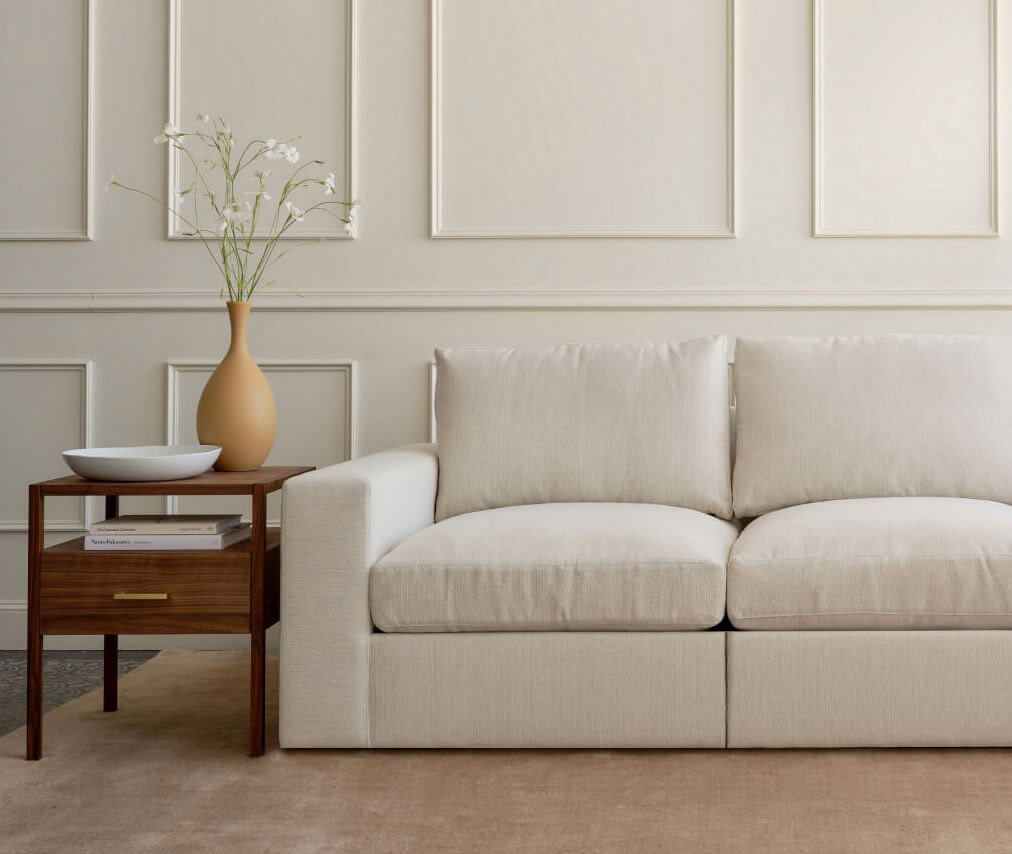
On a mission to outfit your home with sustainable furniture? Amazing! We know this takes effort: from eco materials to responsible production practices, there’s so much to learn and compare before you buy. Factor in the reality that eco-friendly and sustainability claims can often be misleading (there’s a term for this: greenwashing). Sigh.
So how do you cut through the noise and find companies that truly commit to sustainable practices? It takes considering how your health could be impacted, how the planet’s health could be impacted, and getting a sense of the brand’s authenticity. Let’s get into it with five tips.
Consider your own health
1. Start by looking for what you don’t want to find in your furniture
- Opt for woods with FSC certification over MDF and particle board. These can contain formaldehyde and harsh adhesives that off gas. They also often don’t last as long, and as they break down they emit volatile organic compounds that are toxic to animal life.
- How about the upholstery? Natural fabrics are always a nice choice, but if you’re concerned about spills and stains (raise your hand if your kid's favorite game=jumping up and down while you’re sipping coffee on the sofa 🤦) you still have options! You might go for an eco-certified performance synthetic fabric to wrap your sofa. While fabrics like polyester are not 100% natural, it’s often a healthier choice than a fabric protector spray that isn't eco-certified.
- Finally, ask if fire retardants (pentaBDE, octaBDE, decaBDE, perchloroethylene, bisphenol A and triclosa) are present.
Phew! That was a lot to take in. Well done.
Consider the planet’s health
2. Look for longevity
That on-trend shape may look cute to you now, but maybe not in five years—consider how enduring (and useful) the design you’re considering really is. Opt for furniture with high-quality and durable materials designed to stay in place for the long haul, and understand whether those materials come from renewable sources.
Put another way, will your furniture be high-quality enough to last for generations and not end up in a landfill? If it were to end up in a landfill (😟), is it more biodegradable than not?
3. Check where sourcing and production happens

Scenes from Medley's workshop in California
Understanding these locations can help you imagine what kind of carbon footprint you’re working with. Think: from the frame to the filling to the finished piece, how far did the materials have to travel to come together then get to you?
Researching where the materials come from can also shed light on whether the product was sourced ethically. For example, a lot of teak wood currently comes from over-logged monsoon rainforests in South Asian countries like Myanmar, which is currently suffering from a particularly high rate of forest loss.
In a situation like this, ask yourself if a different material choice could work for the piece you’re envisioning. See if the company you’re interested in offers other, more eco-friendly woods (think bamboo and reclaimed wood) or takes part in reforestation efforts and carbon offset initiatives.
Still there? Taking notes? Eeeexcellent.
Understand the company’s commitment to sustainability
4. Look for eco-friendly furniture certifications
Take advantage of third-party vetting and see if the company meets any green certifications. If you find a label you’re unfamiliar with, check sources around the web to get to know it. There are many new labels and standards popping up, so look into the certification to understand what efforts are underway.
At Medley, our products are certified by the following organizations:
5. Get a sense of the company’s investment in going green

Identify whether the company sells eco-friendly furniture exclusively, or if they only carry a single sustainable line. If their efforts aren’t green across the board, are they transparent about where they can improve? Do they greenwash without backing up their claims? If you can’t find the information you’re looking for, don’t hesitate to ask the brand directly.
That said, if you have any questions about Medley’s practices, we’re always happy to chat, and you can find information about our materials here.
To start, here’s a glance at what goes into Medley’s eco-friendly and sustainably-made furniture:
- Domestically-sourced, kiln-dried alder hardwood, plus walnut and maple that always comes from FSC-certified forests.
- Certified organic plant-based latex foam
- OEKO-TEX Standard 100 wool
- Organic cotton linings certified by the Global Organic Textile Standard
- Greenguard Gold Certified and OEKO Certified fabrics
Hooray! You’ve made it through our extra-long guide, and you definitely deserve to go shopping now. Ready? Let’s go!


